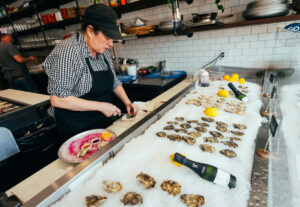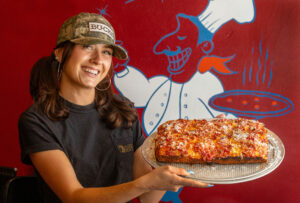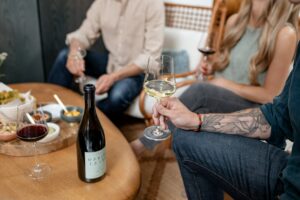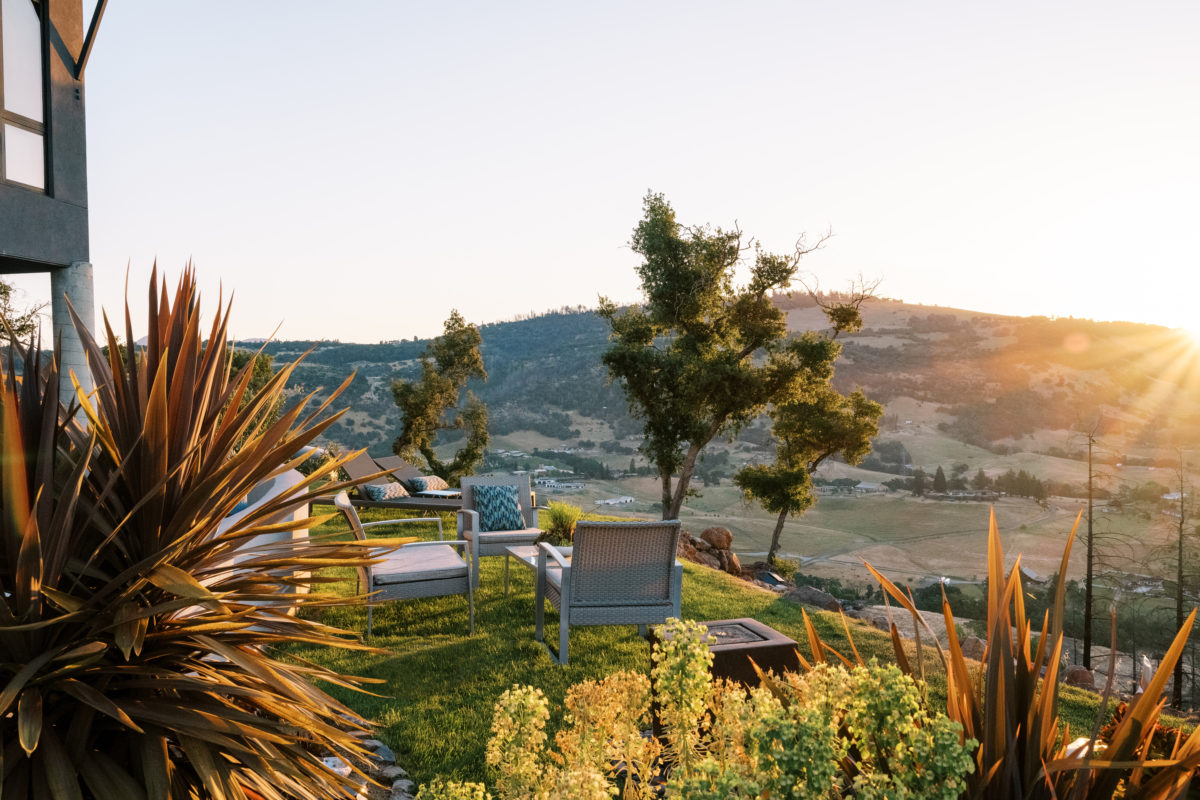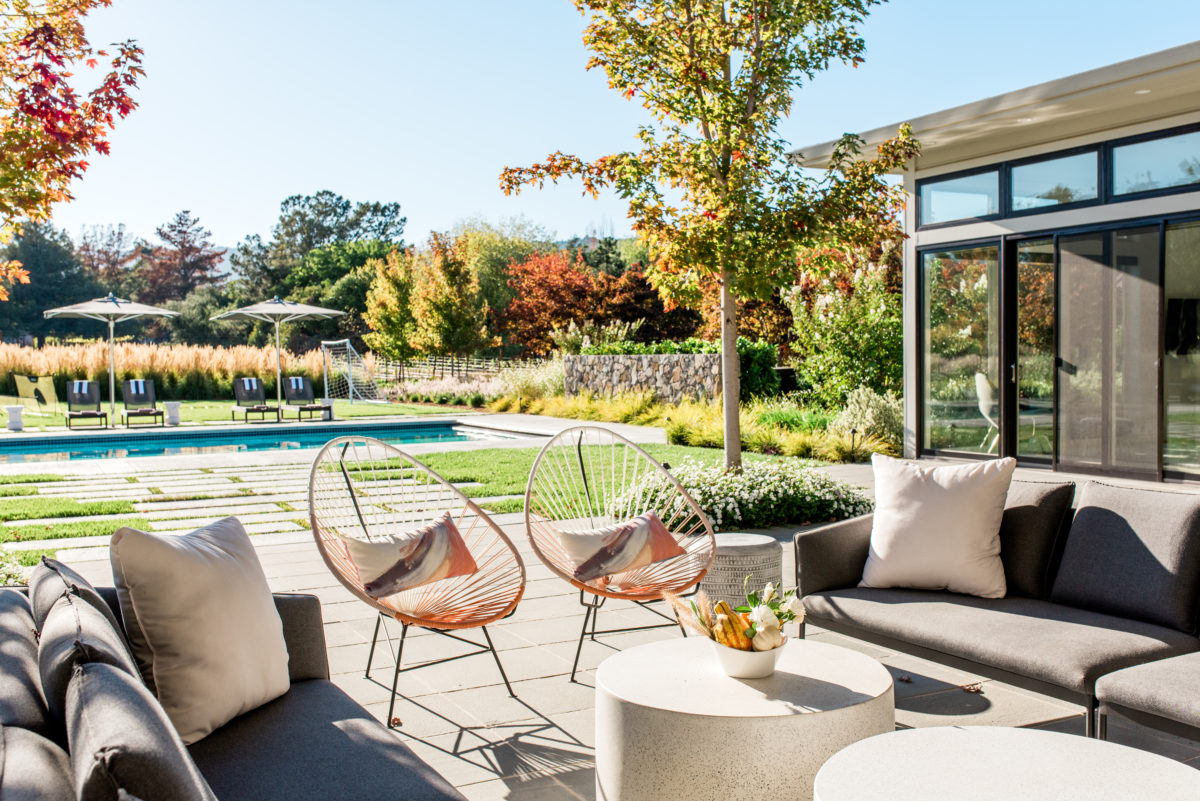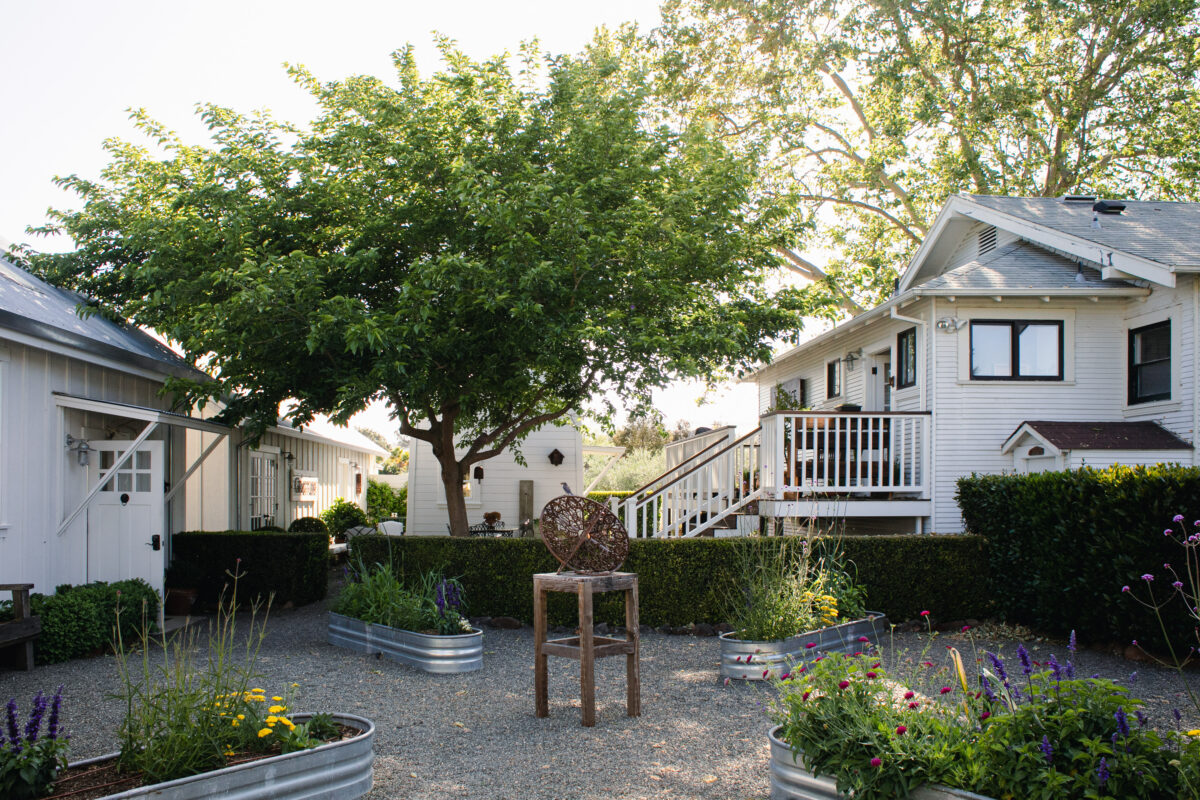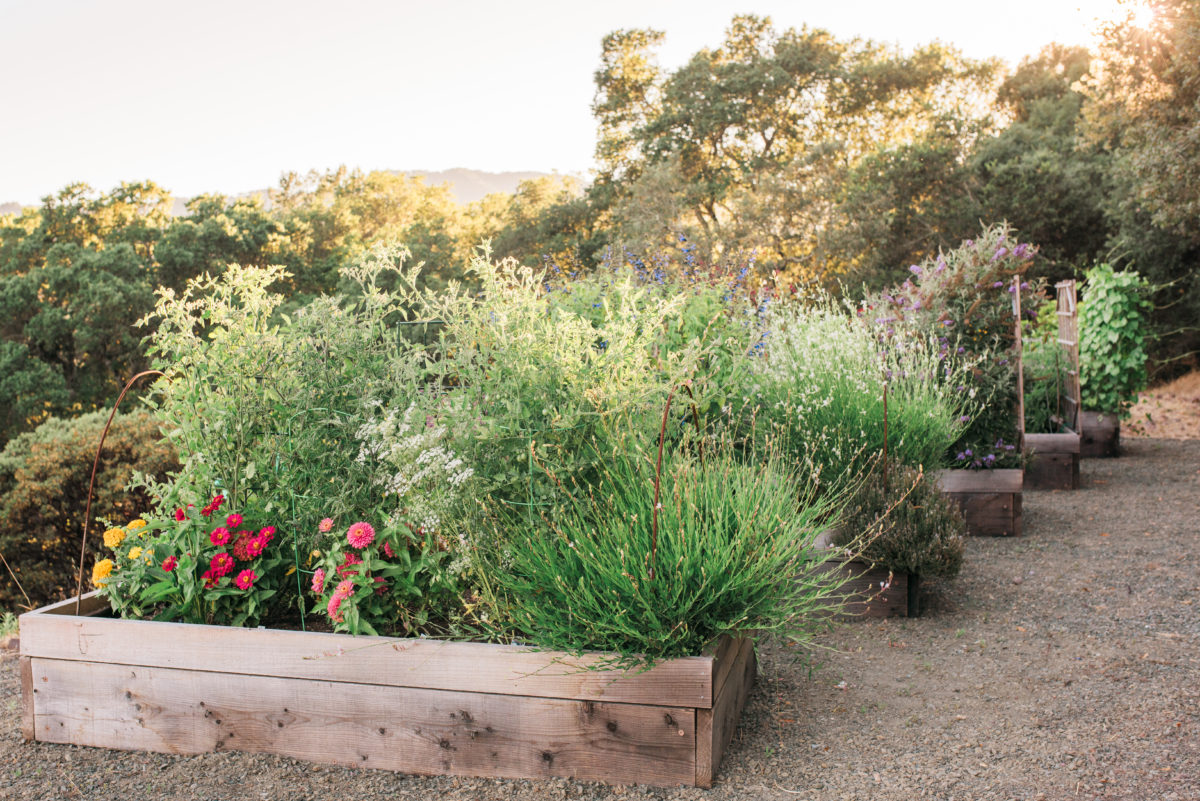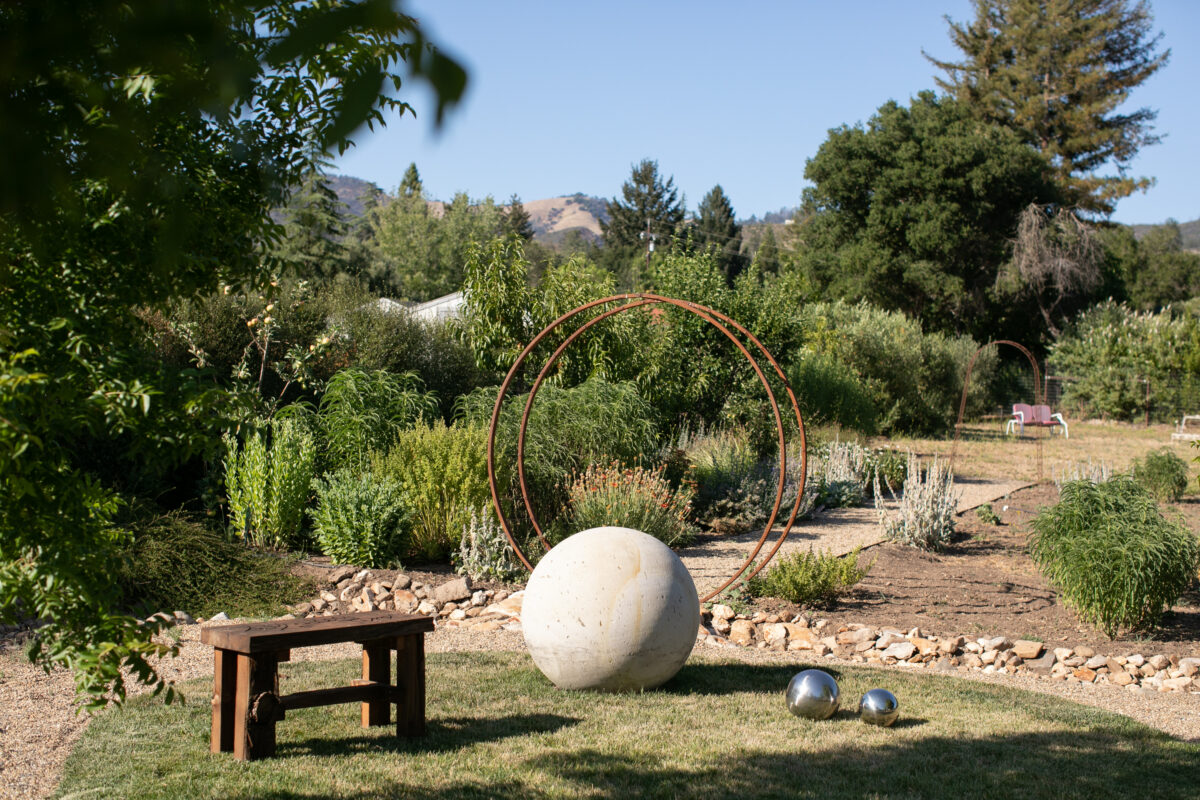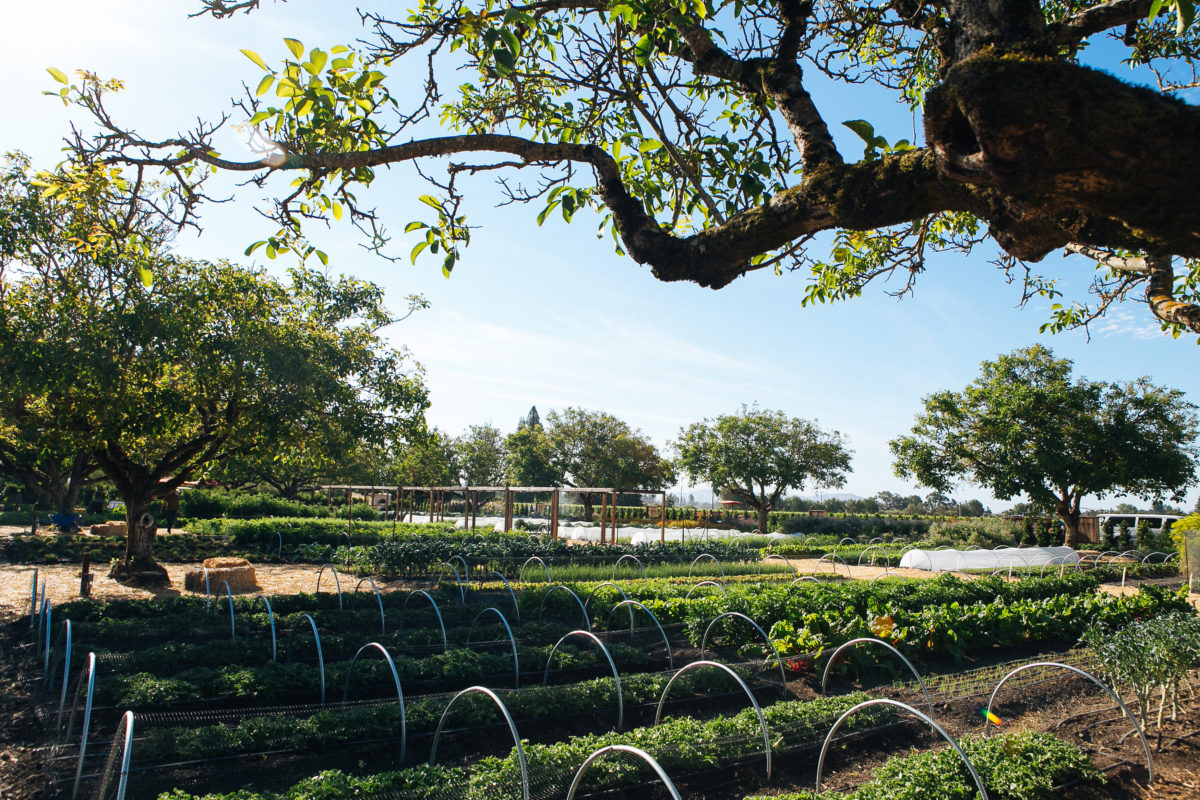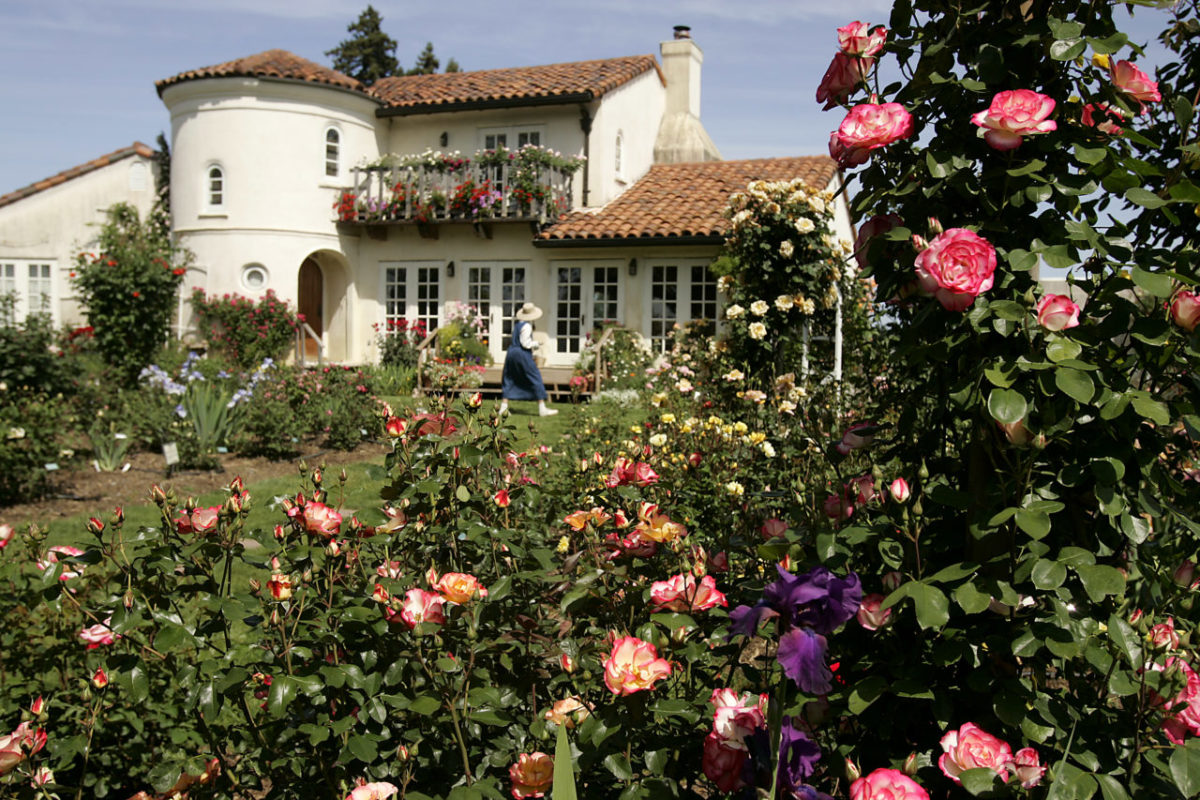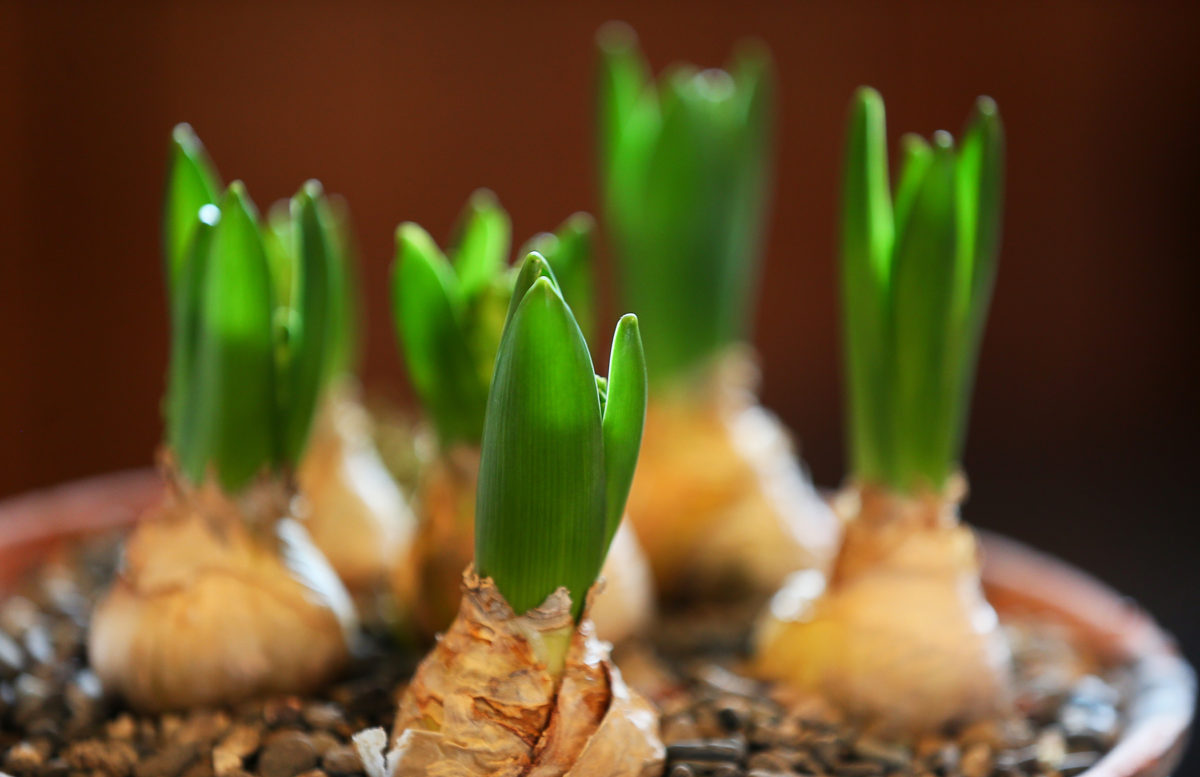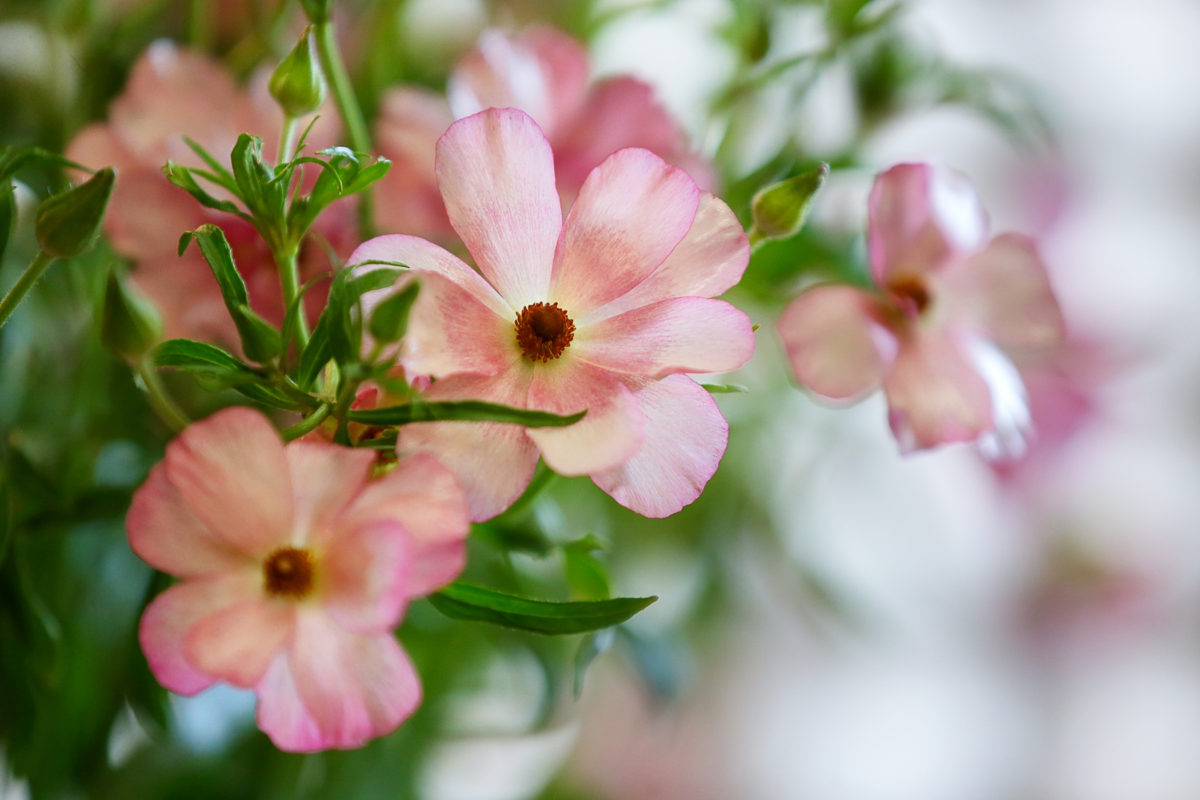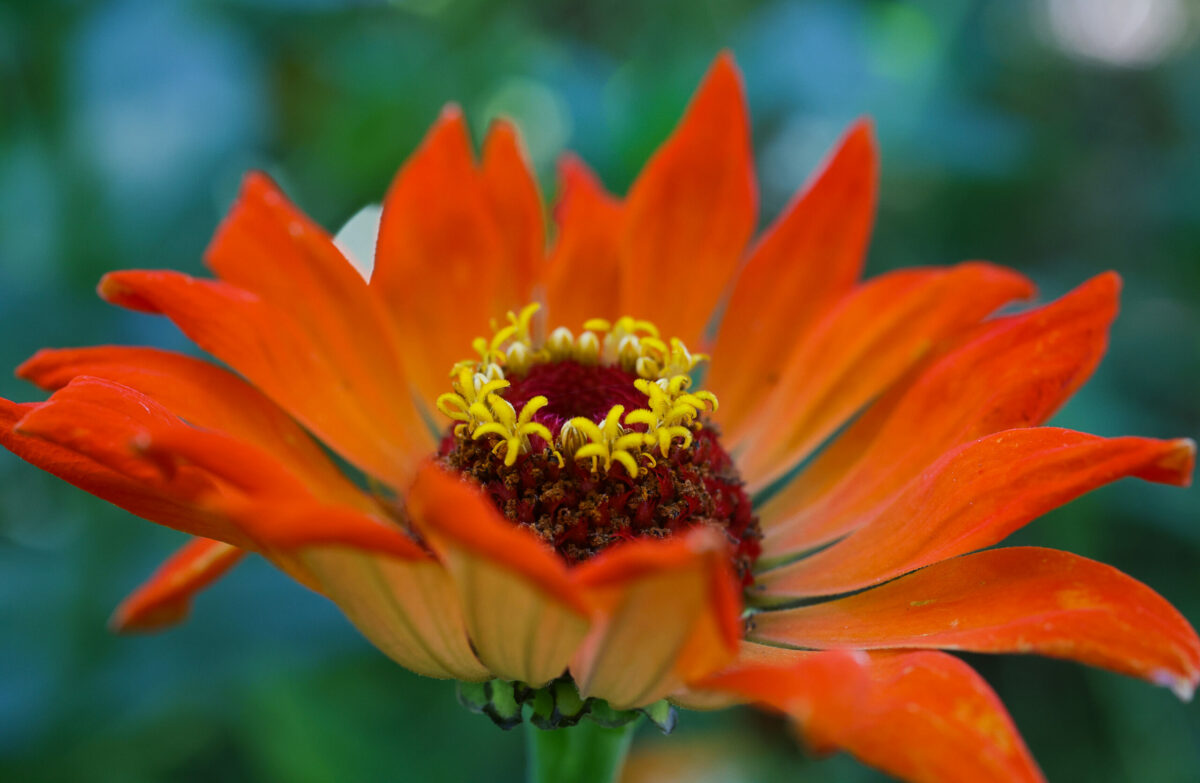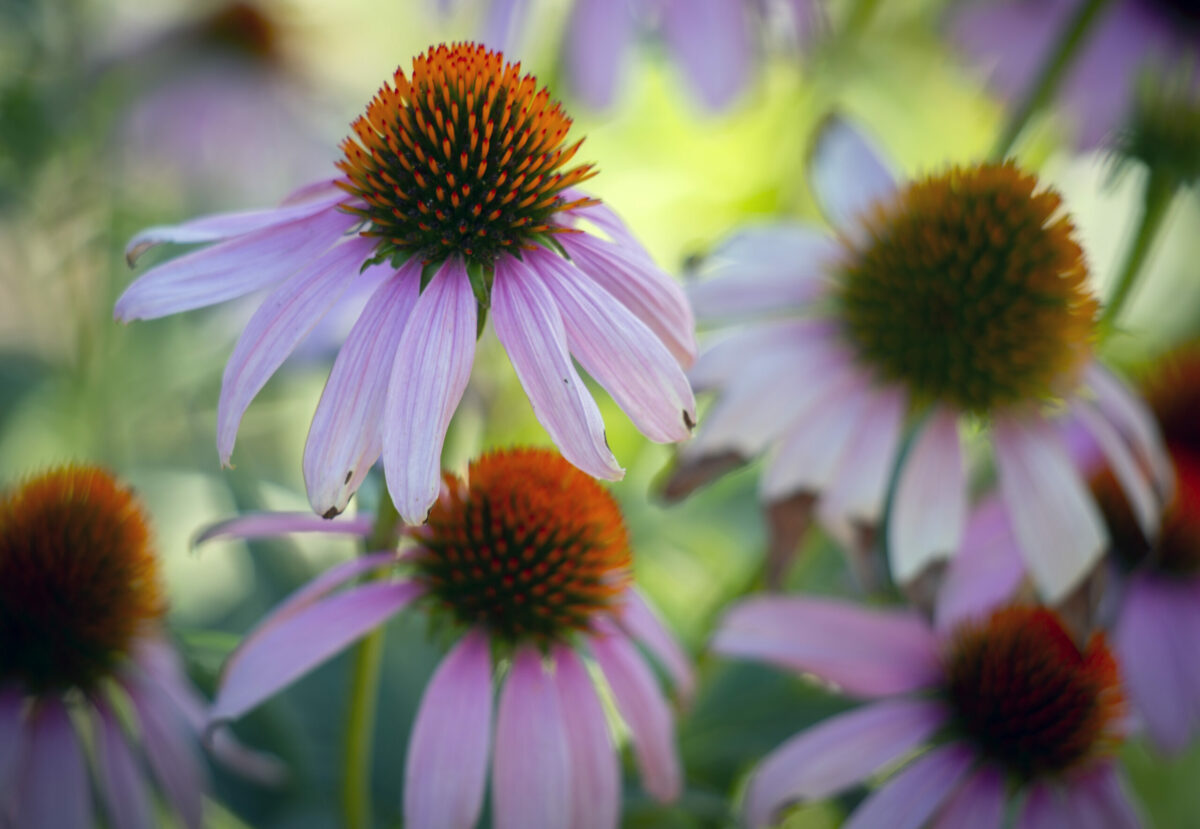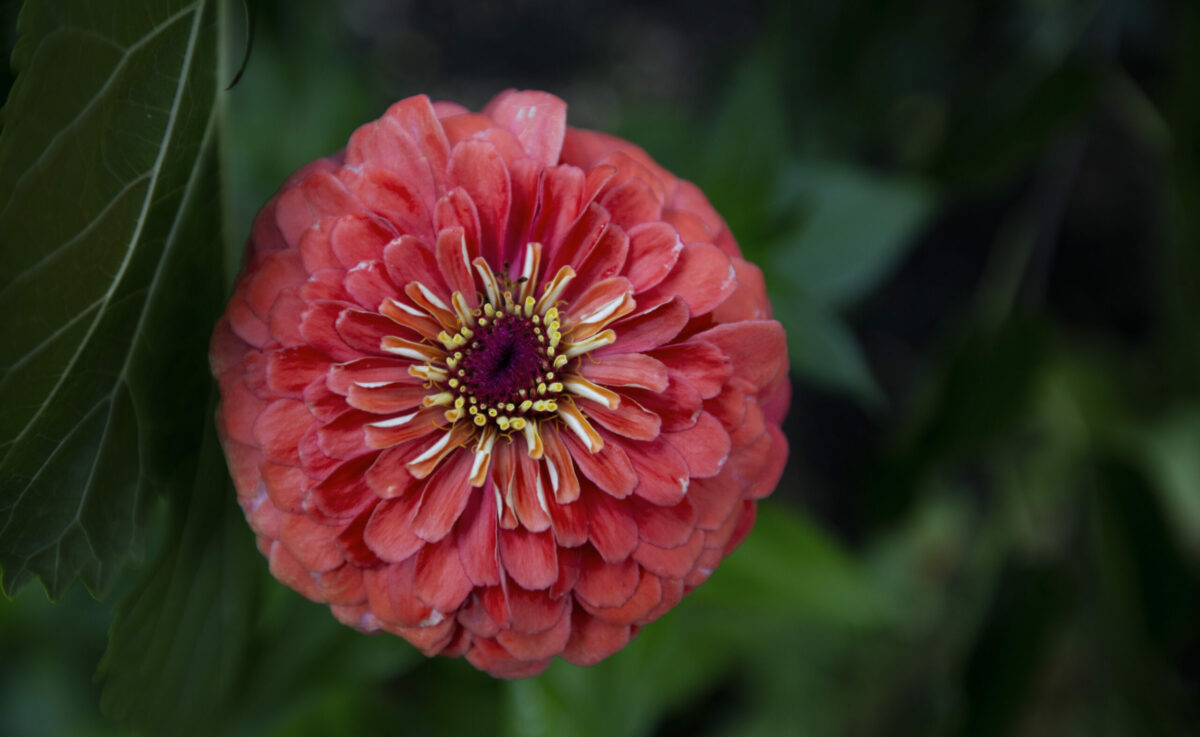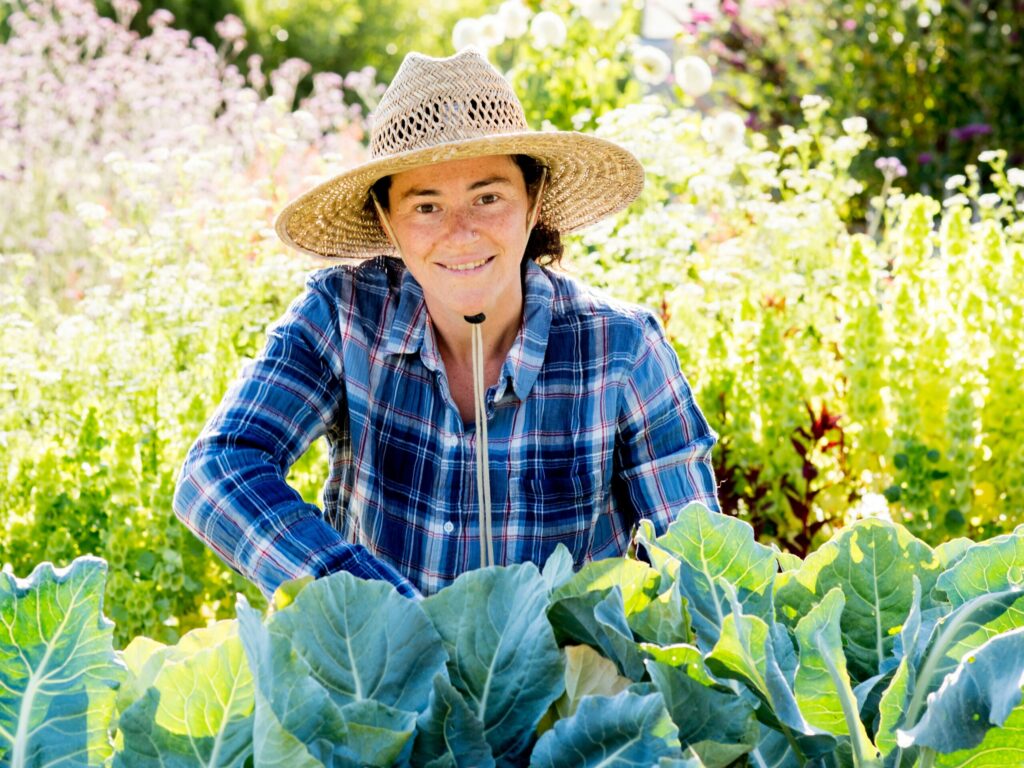Why we garden
Paul Martinez is Sonoma’s gardener philosopher, supplying best-quality plants at his Sonoma Valley Wholesale Nursery (open to the public, sonomavalleynursery.com) , and spreading enthusiasm for gardening to visitors from all over. “Gardening is experiential. We can’t wrap ourselves up in fear—we have to seize the day. Try things out. Observe our work and learn from our mistakes,” he says.
Martinez revels in the beauty and rewards of planting season, providing a message of calm reassurance. “It’s all instinct,” he explains.
“Intrinsically, working in the garden touches something inside of us and makes people feel at peace.” He encourages gardeners to focus on the wonder of being in the garden and witnessing moments that make us happy. “When we go out there and grow a flower, we feel on top of the world. The best gardeners are the homeowners who just love their yard.”
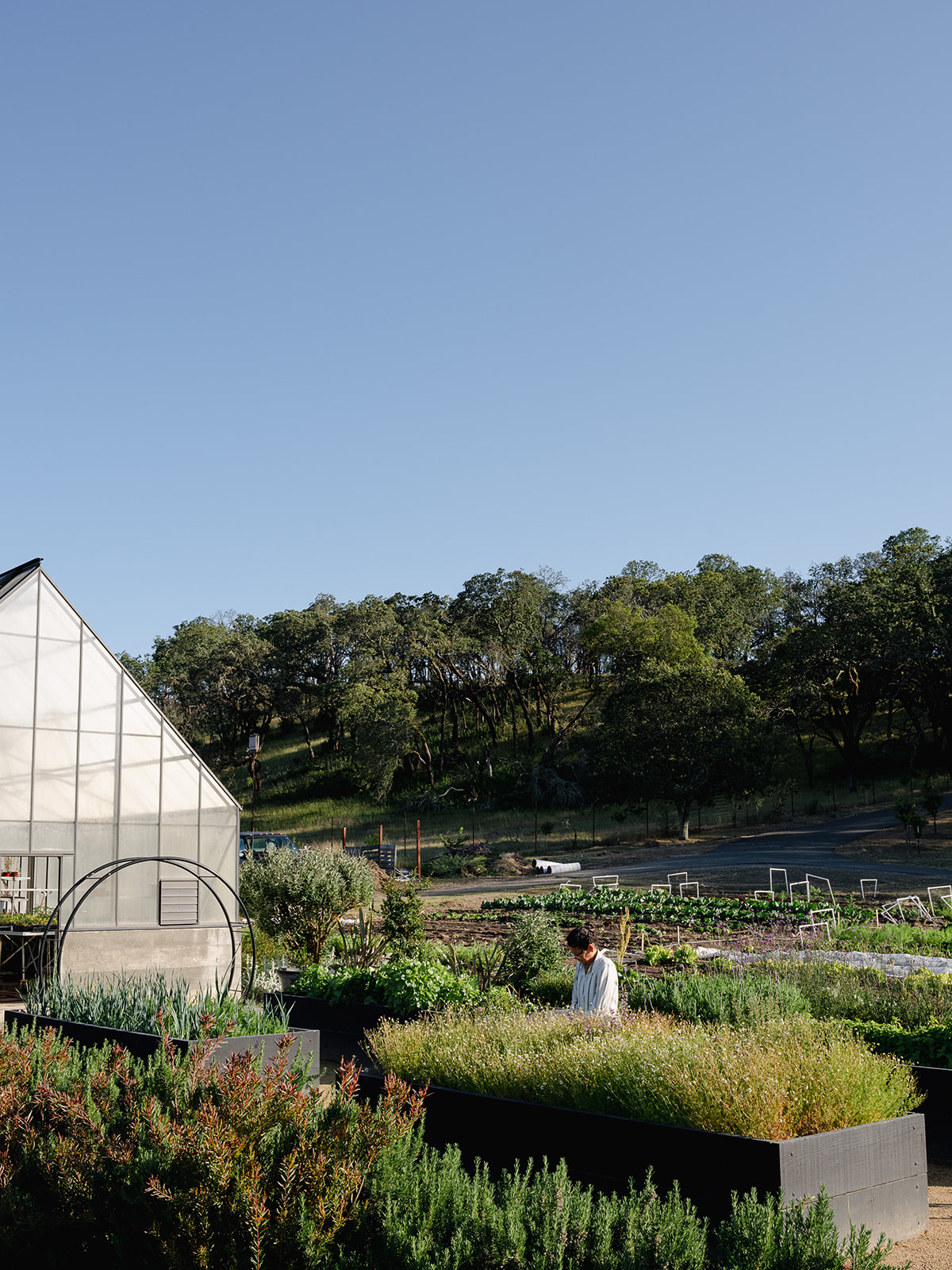
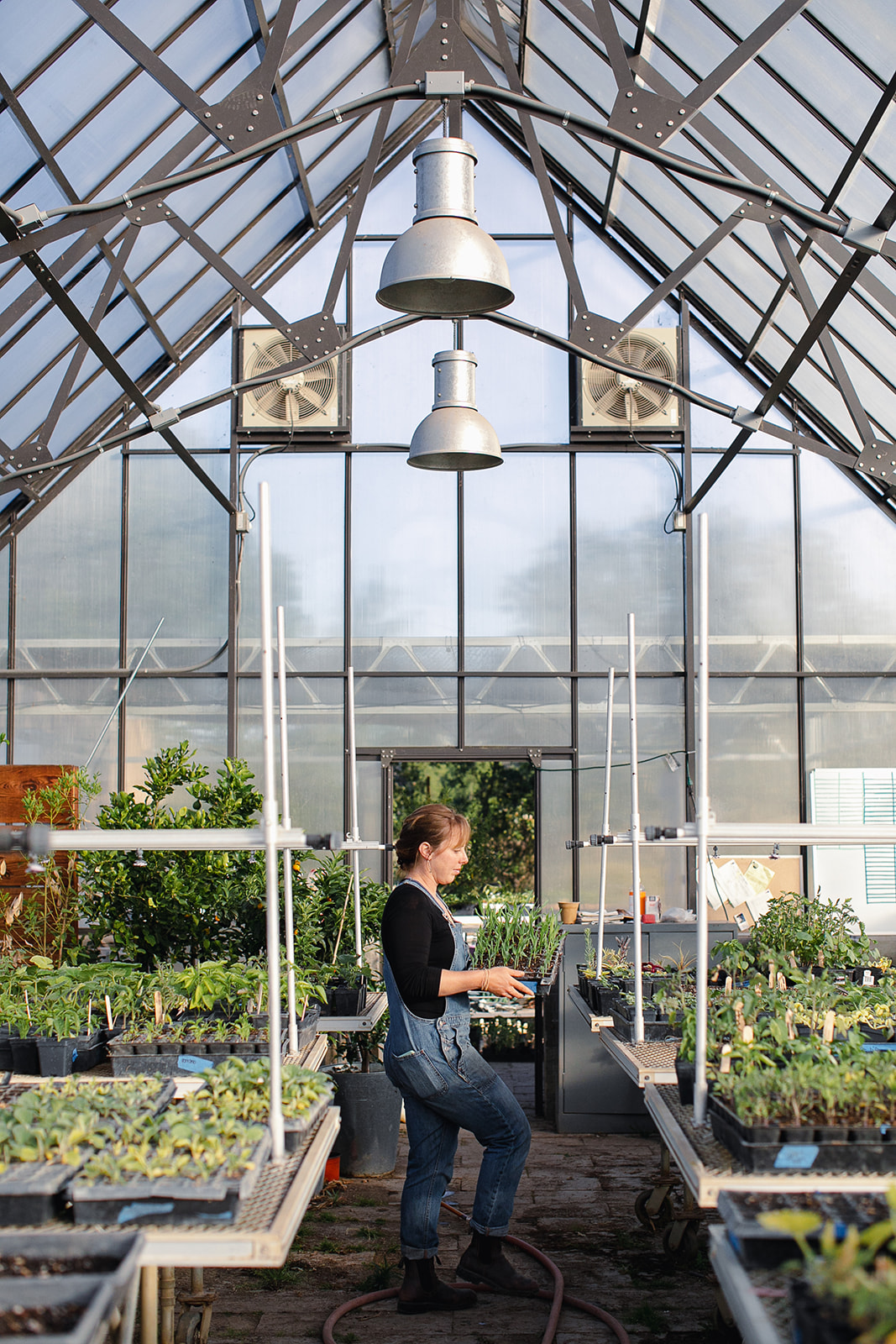
5 best Instagram accounts for Sonoma gardeners
Feather Flower Farm: Farmer-florist Sierra Bannister’s swoon-worthy blooms and arranging tips. @featherflowerfarm
TerraVesco: Regenerative farming advice and practical tips to improve soil health. @terrathrive_
UC Master Gardeners Sonoma: Links to informative articles, local seminars, and garden calendars. @sonomacountymg
View this post on Instagram
Tucker Taylor, Kendall-Jackson: Exquisite photos of rare vegetables (caviar limes, crosnes) and plenty of scene-stealing truffle dogs. @farmert
Sonoma Garden Park: Kids and teens in the garden and veggie-growing tips. A project of the Sonoma Ecology Center. @sonomagardenpark
Healing with herbs
The Botanical Bus, a bilingual health clinic reaching out to Indigenous and Latino communities in Sonoma County, provides local farmworkers with garden boxes of medicinal herbs and leads plant-based wellness workshops. thebotanicalbus.org
Backyard wine
Want to try growing grapes on a small scale? Grapevines Galore in Dry Creek Valley is the public arm of industry source Grey Creek Viticultural Services. It sells beautifully healthy, ready-to-plant varieties of both winegrapes and yummy table grapes like Flame and Perlette. Grapevine-specific planting advice, too— mid-March through April is ideal for our area. grapevinesgalore.com
My favorite gear
Jude Crawford of cut-flower operation Zannah Farms in Santa Rosa starts thousands of blooms from seed each year. Her go-to tool for transplanting tiny, newly-sprouted seeds from seed-starting trays into larger containers is an inexpensive triangular painter’s palette knife from an art supply store. Who knew? About $8 at Art & Soul Sebastopol, artandsoulsebastopol.com
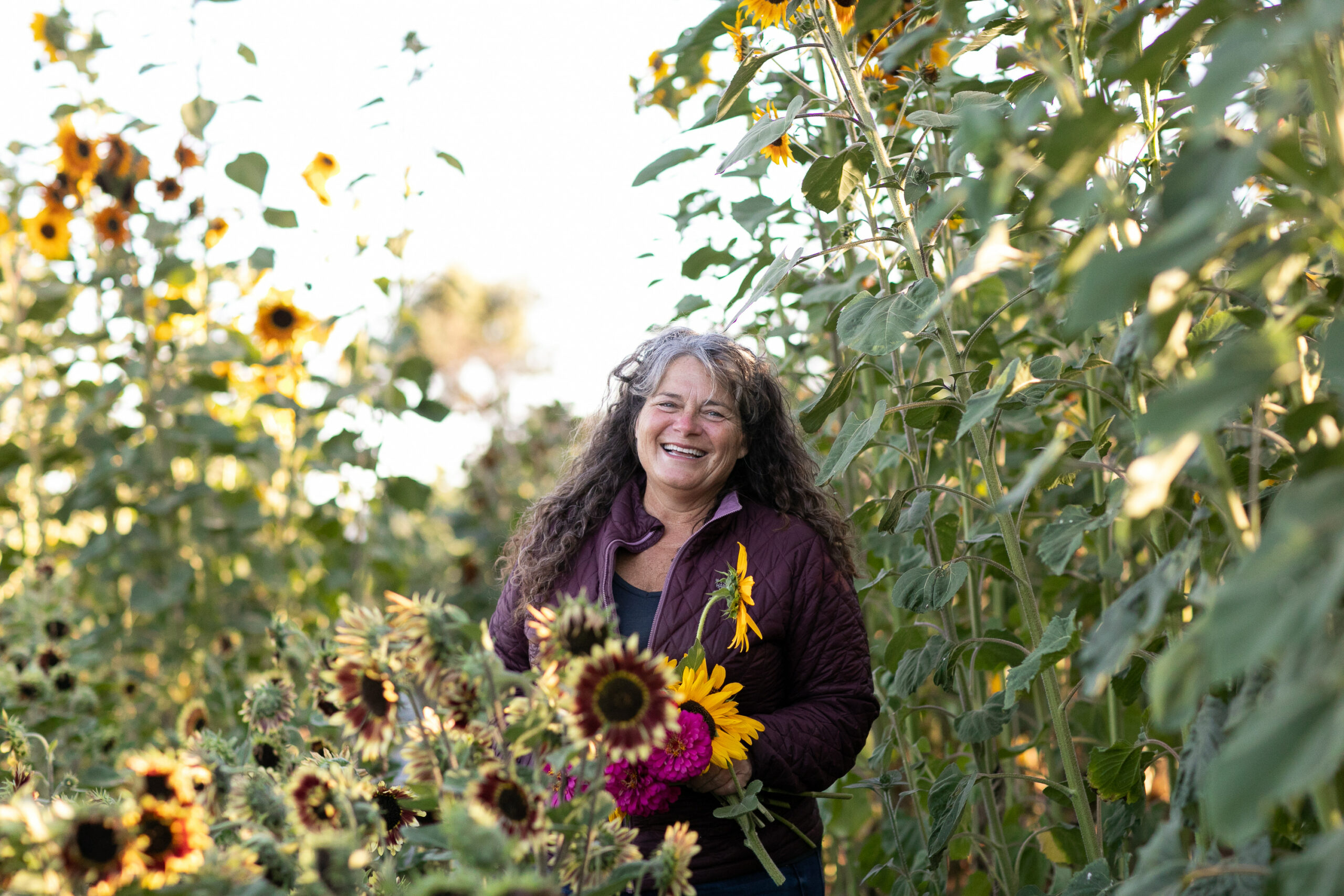
Fire-wise gardening
The truth is, all plants burn. But you can protect your property and be more fire-wise by clearing a ring of defensible space around your home, choosing fire-resistant plants, and removing fire-prone trees and shrubs like juniper, cypress, and Monterey pine.
Fire-resistant plants have an open growth habit, don’t contain flammable resins and oils, and don’t accumulate large amounts of dead wood, stems, or leaves. Here are a few good picks for Sonoma gardens:
Trees: California redbud and coast live oaks
Succulents: Agaves and aloes
Shrubs: Cistus (rockrose) and salvias
Ground covers: Sedum and dymondia
Perennials: Penstemons and coreopsis
A raised-bed cutting garden
This cutting garden, which fits a standard 4-by-8-foot raised bed, is packed with easy-to-grow blooms that will provide a bounty of cut flowers all summer.
‘Cut and Come Again’ Zinnias: A rainbow of flowers bloom endlessly all summer. Sow directly from seed or plant nursery starts.
Cosmos Binpinnatus: A mix of pink, crimson and white flowers hovers over 4-foot-tall ferny foliage. Sow directly from seed.
‘Color Palette Cupid’ Sweet Peas: Sweetly scented pastel flowers decorate a 10-inch cascading bush of blooms. Sow directly from seed.
‘Cup of Sun’ Nasturtiums: A mounding variety boasting cheery golden flowers and waterlily-shaped leaves. Sow directly from seed.
‘Lemon Queen’ Sunflowers: A cinch to grow and appealing to pollinators. 5 to 7 feet tall. Sow directly from seed or plant nursery starts.
Those amazing master gardeners
What a gift to have a free, local resource like the Sonoma County Master Gardeners. A program run by UC Cooperative Extension, the Master Gardeners offer classes and seminars, run information booths at farmers markets and other events, answer gardening questions via email, and write advice columns for our sister publication, The Press Democrat. Their spring garden tour is May 13. Information desk: 707-565-2608. sonomamg.ucanr.edu
My favorite gear
Gardeners always need their pruners—but how do you keep from losing them? Try a holster, says garden designer Kier Holmes. Felco makes one that clips to a waistband or feeds through a belt. About $15 at local garden centers, including Friedman’s Home Improvement and Sonoma Mission Gardens.
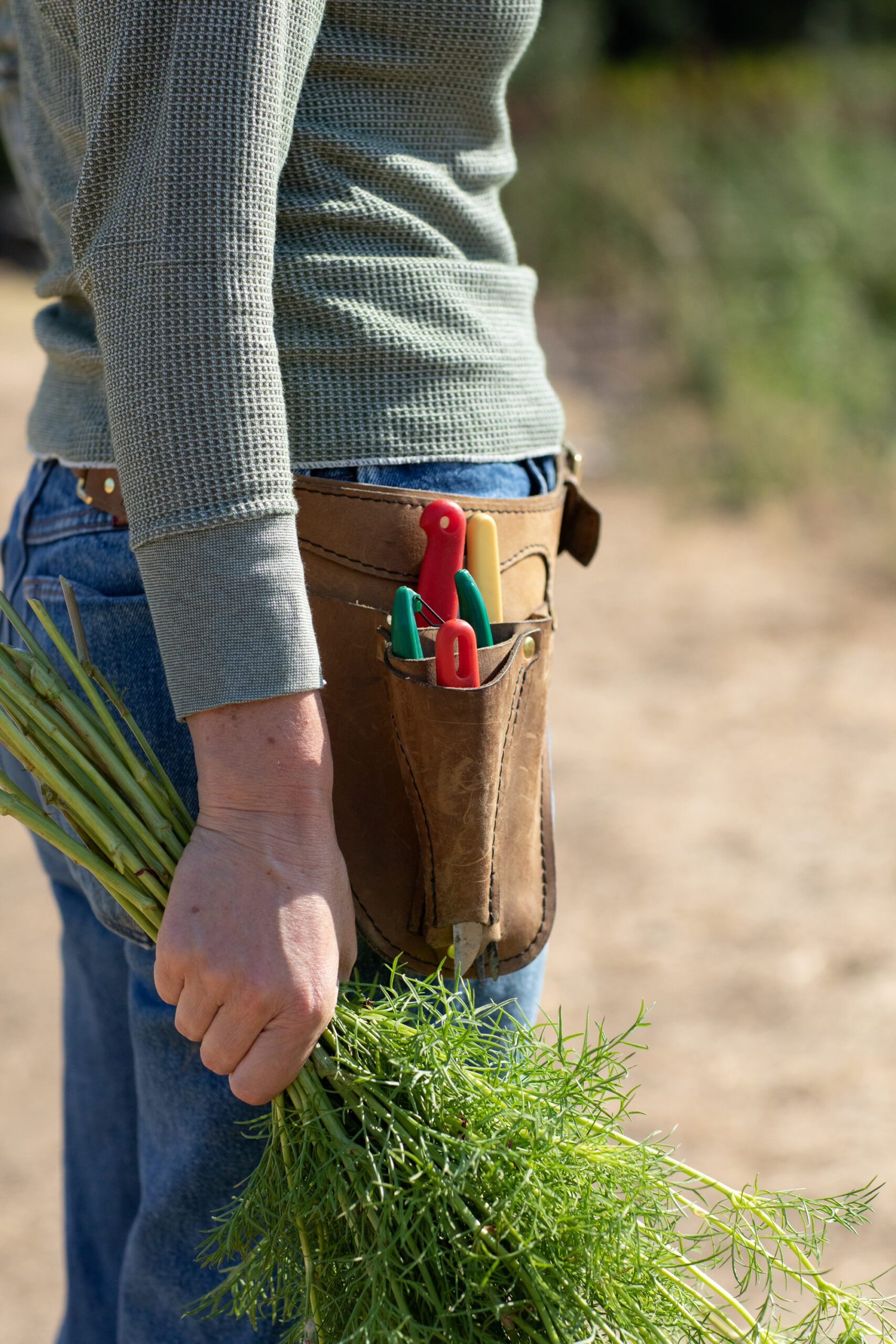
Swap out your lawn
In Healdsburg, Cotati, Rohnert Park, and several other Sonoma communities, “Cash for Grass” rebate programs offer incentives to replace your resource-guzzling lawn. To boost biodiversity and create a healthier ecosystem, here are five things that patch of lawn could become instead:
• A pollinator-friendly garden bursting with native plants.
• A cutting garden for homegrown bouquets.
• A foodscape of veggies to feed your family.
• A succulent garden top-dressed with gravel.
• A natural meadow of no-mow fescue dotted with wildflowers.
Classic Sonoma pairings
These three power couples characterize the Wine Country vibe—and are relatively drought tolerant to boot.
‘Iceberg’ roses + ‘Grosso’ lavender: Classic-style shrubs for sunny spots.
California poppies + blue lupines: Vivid colored, pollinator-friendly wildflowers to grow from seed.
Olive trees + rosemary: A mix of soft, tone-on-tone greens. ‘Little Ollie’ dwarf olives fit smaller spaces.
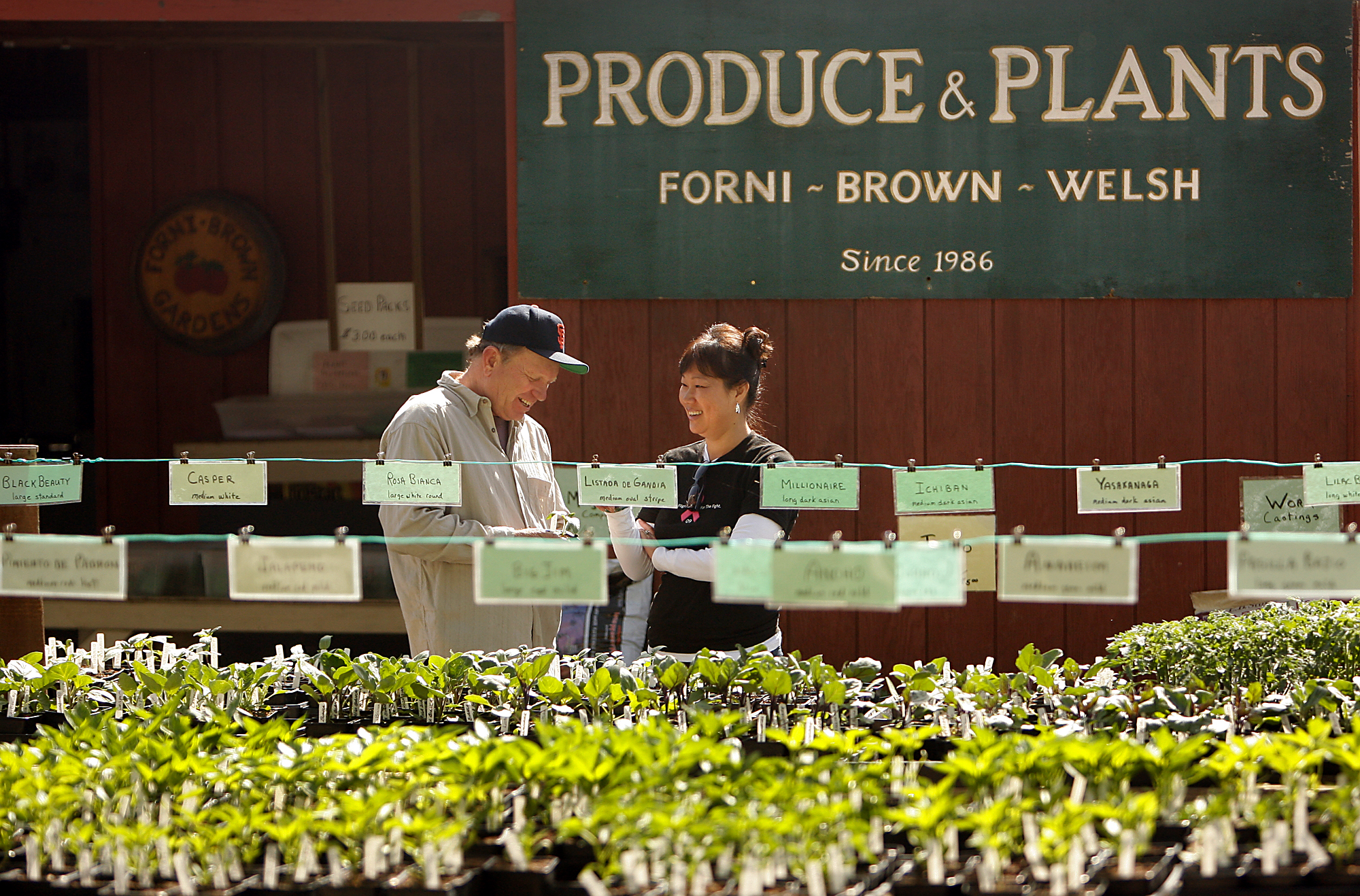
Favorite specialty nurseries
A rosy glow — Russian River Rose Company: It’s a spectacle as a 2-acre display garden bursts with hundreds of types of roses and irises. Owners Michael and “Rosy Jan” Tolmasoff also distill rose water and rose oil. 1685 Magnolia Dr., Healdsburg. 707-433-7455, russian-river-rose.com.
Second-generation expert — Momiji Nursery: Owner Mike Umehara learned horticulture from his father, the longtime curator of the Japanese Tea Garden in San Mateo. The expertise he lavishes on his Japanese maples really shows. 2765 Stony Point Rd., Santa Rosa. 707-528-2917, momijinursery.com
Strongest starts — Flatbed Farm: A perfect Saturday morning: grab coffee from the cart, then browse garden gifts and healthy seedlings grown on site. 13450 Hwy. 12, Glen Ellen. flatbedfarm.com
Made for the shade — Hidden Forest Nursery: Mike Boss rescued the former Sonoma Horticultural Nursery and preserved its nearly 50-year-old garden full of rare rhododendrons and azaleas. Treat yourself to a forest bath as you meander the shady acres. 3970 Azalea Lane, Sebastopol. 707-823-6832, hiddenforestnursery.com
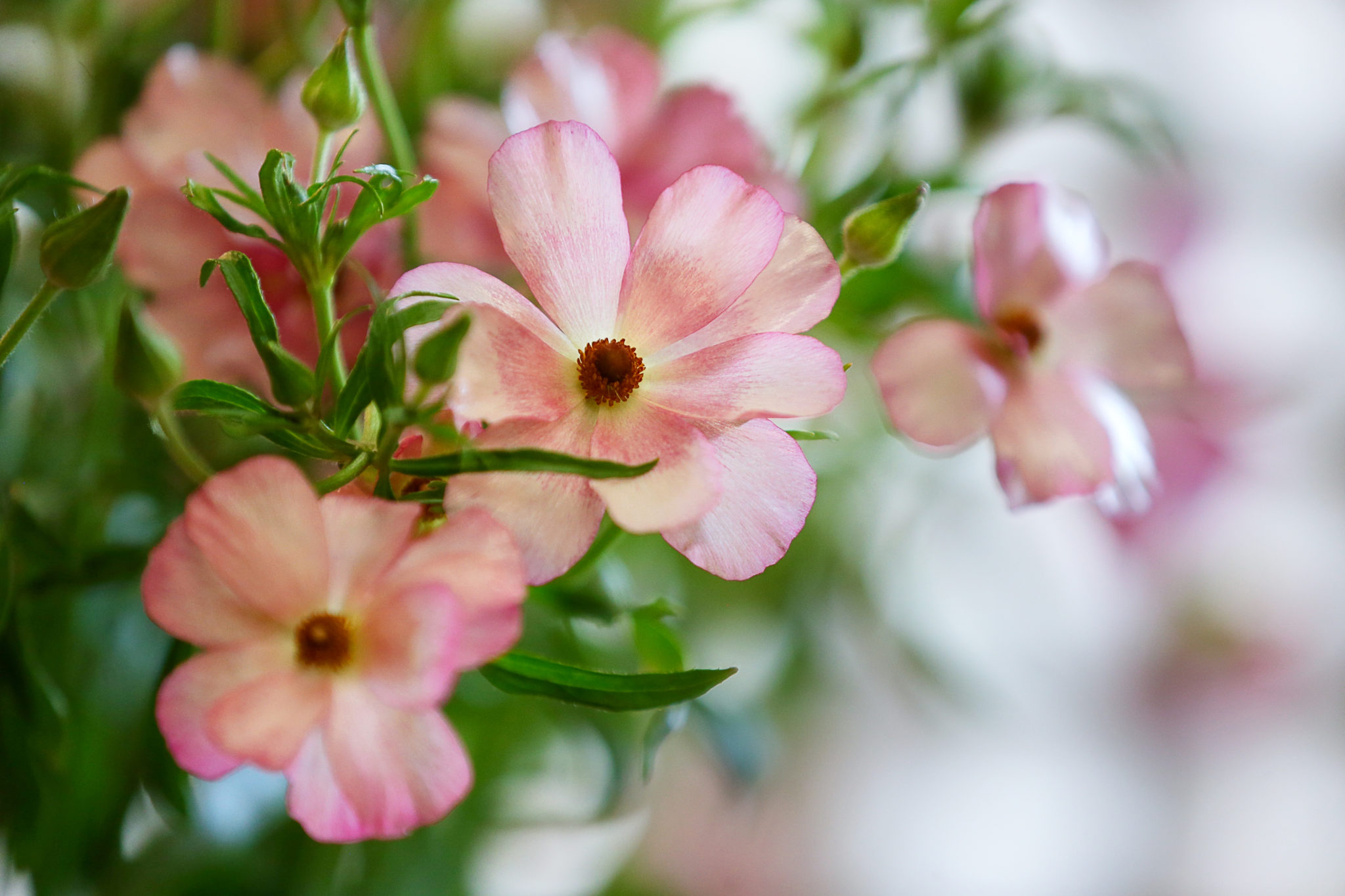
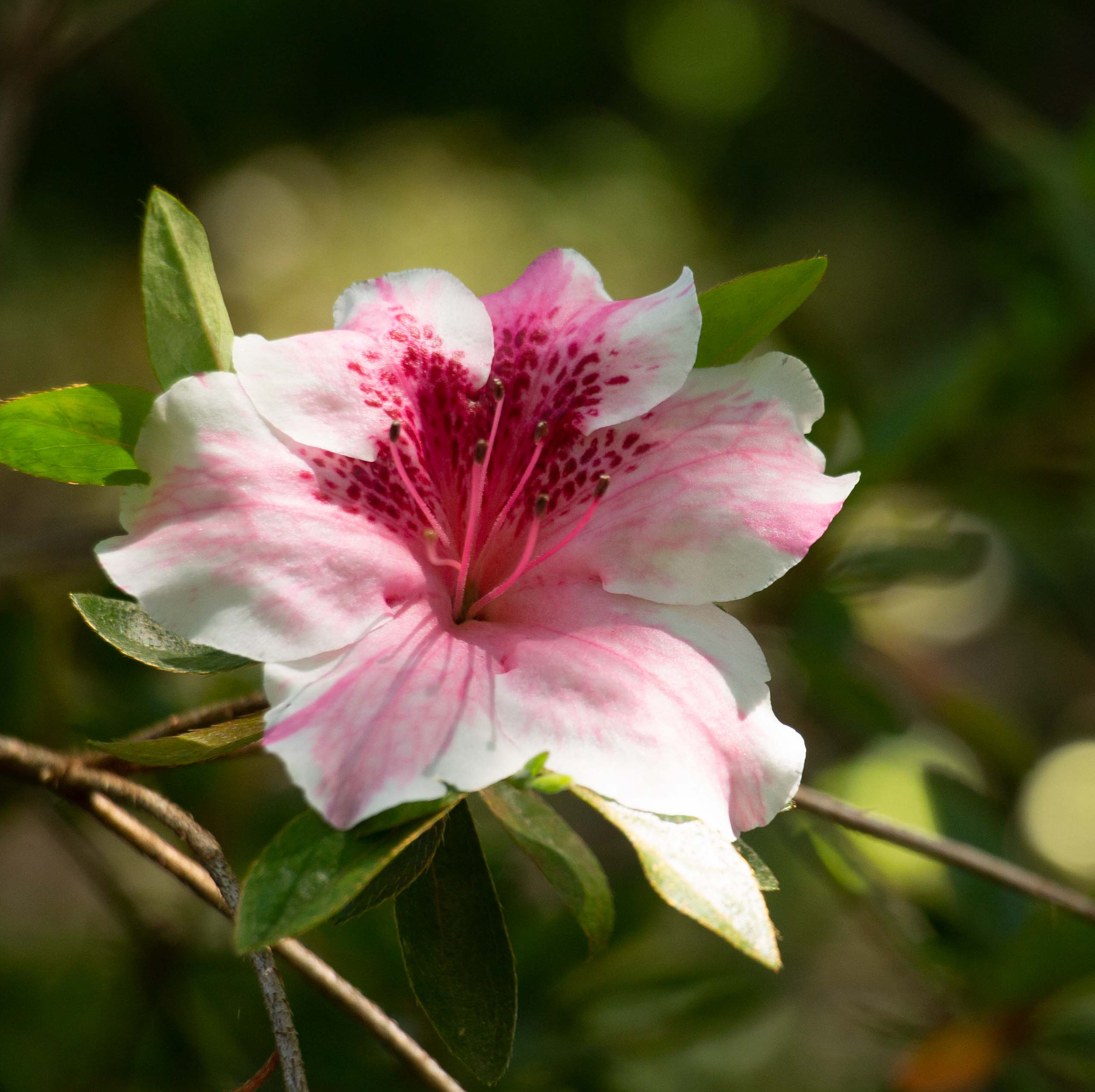
Healthy veggies — Mix Garden: When April (or even May) rolls around and you think you’ve missed your window for unusual tomatoes, eggplants, and melons, this spot will help you out with healthy starts ready to go. 1531 Healdsburg Ave., Healdsburg. 707433-4327, mixgarden.com
Tools of the trade — Harmony Farm Supply: All the tools, soil amendments, and drip irrigation supplies for smart gardens, plus quality plants and advice. 3244 Gravenstein Hwy. North, Sebastopol and 5400 Old Redwood Hwy. N., Petaluma. 707823-9125, harmonyfarm.com
Full service — The Nursery at Emerisa Gardens: This is the public facing front of Emerisa’s robust plant starts business, with all sorts of locally adapted veggies and flowers ready to plant in 4-inch pots. 555 Irwin Lane, Santa Rosa. emerisagardens.com
Only the best olives — The Olive Tree Nursery: This specialty spot propagates its own trees from cuttings, focusing on varieties for oil or to cure for eating—Frantoio and Leccino from Italy, Arbequina and Manzanillo from Spain. Meticulously pruned olive bonsai, too. 908 Rockwell Rd., Cloverdale. geyservilleolive.com
Indulgent eye candy — Cottage Gardens: This jewel box of a nursery has both big statement beauties— roses, clematis, and rhododendrons— and healthy veggie starts, plus trellises, arbors, fountains, and garden art. 3995 Emerald Dr., Petaluma. 707-781-9365, cottagegardensofpet.com
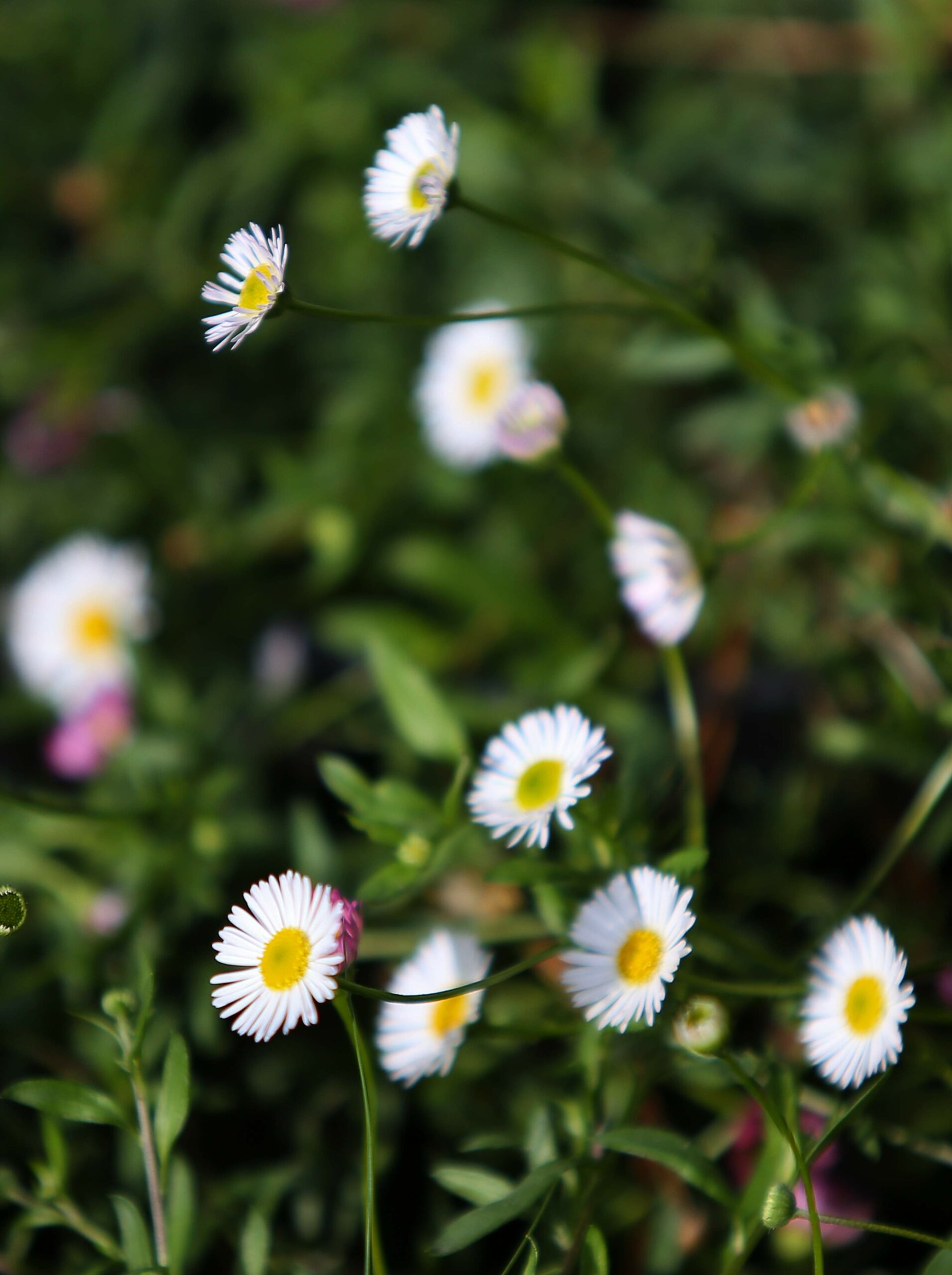
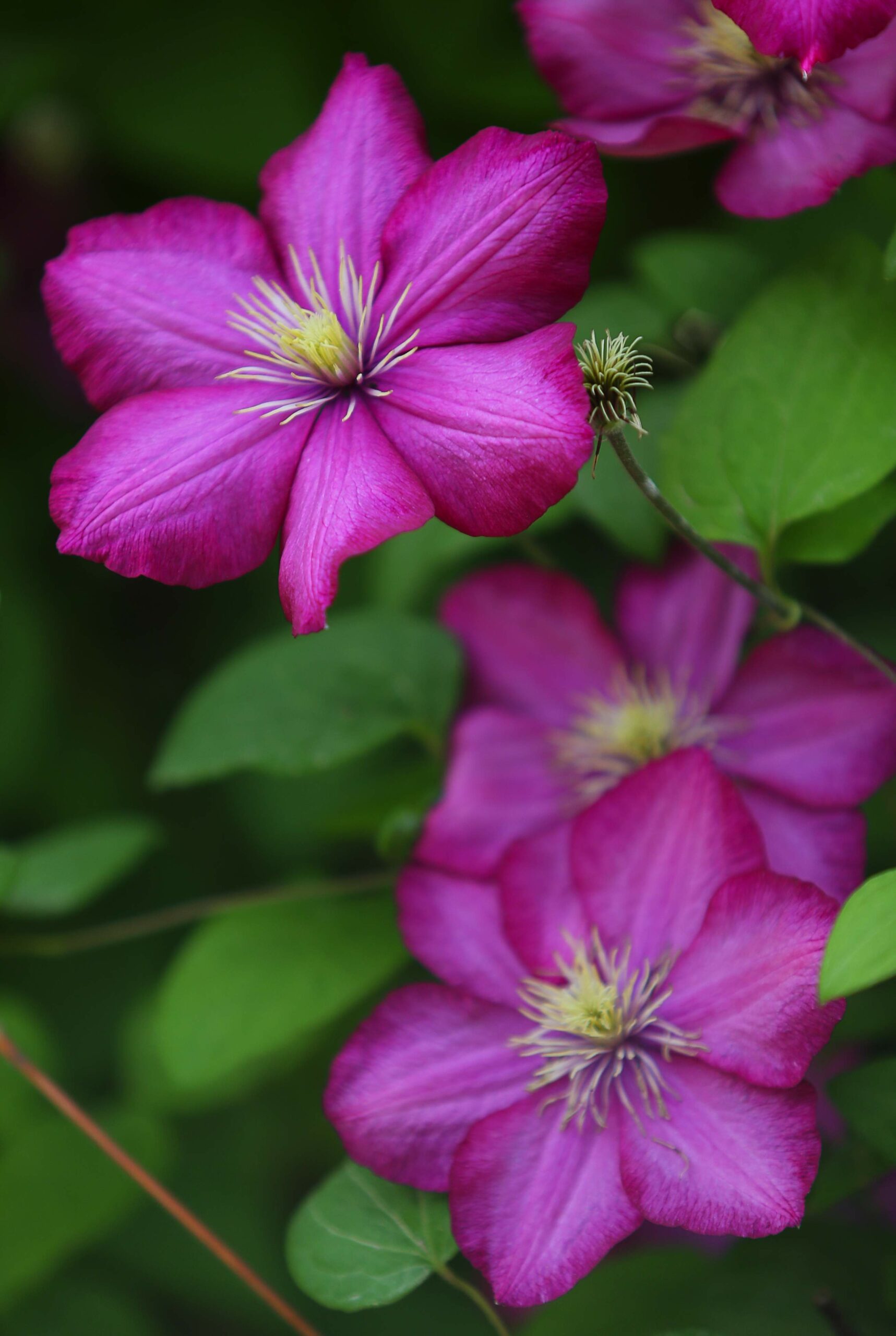
Straight from the farm — Forni Farm and Nursery: Peter Forni closed his beloved Calistoga nursery in 2018. His daughter Miranda brought the magic to the other side of the Mayacamas, with a carefully chosen collection of homegrown veggie starts. 4000 Barnes Rd., Santa Rosa. 707-5955404. fornifarm.com
Sustainable screening — Bamboo Sourcery Nursery & Gardens: Jack and his beanstalk have nothing on this beautiful demonstration forest of fast-growing bamboo varieties from around the world. Carefully stewarded choices and great advice. 666 Wagnon Rd., Sebastopol. 707-8235866, bamboosourcery.com
Going native — California Flora Nursery: This spot was spreading the virtues of native plants decades before drought and climate change made such picks trendy. Something for every spot in the garden (and every microclimate), from grasses and perennials to trees. 2990 Somers St., Fulton. 707-528-8813, calfloranursery.com
A look back: Luther Burbank, Sonoma’s ultimate gardener
The artist Frida Kahlo perhaps best captured the earthy spirit of Luther Burbank, depicting the great plant breeder as a hybrid himself—a man grafted onto a tree trunk whose spreading roots feed from his own remains. Burbank laid down roots in Sonoma County in 1875, using proceeds from the sale of his Burbank potato, the parent of the russet, still the country’s most widely grown spud.
Burbank was a self-taught horticultural scientist who saw Sonoma as an agricultural Eden and developed more than 800 varieties of plants at his nursery and home here, including 113 different types of plums and 50 different lilies, plus Shasta daisies, plumcots, and spineless cactus.
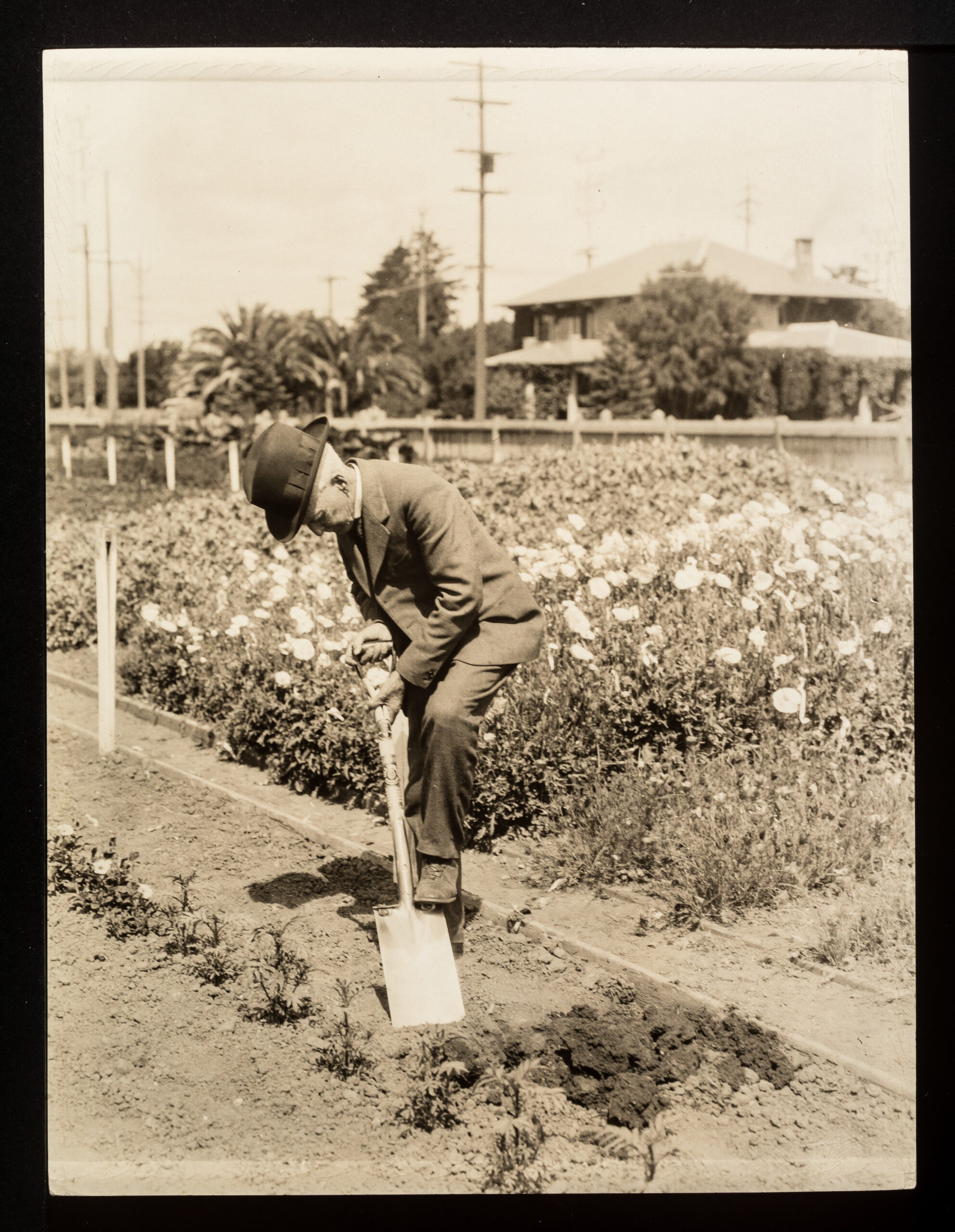
An unlikely celebrity, he was regarded as one of the great inventors of the time alongside titans like Thomas Edison and Henry Ford, both of whom traveled to Santa Rosa to see Burbank at work.
Though his legacy is complicated by questions about his advocacy for eugenics, Burbank’s memory still looms over our county, a place he deeply loved and called “the chosen spot.” Visit his Santa Rosa home and gardens on a self-guided tour; lutherburbank.org for info.
Picks for pollinators
Try these long-blooming lovelies that bees, butterflies, and hummingbirds will adore. The Sonoma County Beekeepers Association has more tips for locally adapted, bee-friendly plants at sonomabees.org.
• Borage
• Buckwheat (Eriogonum)
• Coneflower (Echinacea)
• California milkweed (Asclepias)
• New England aster
• Penstemons
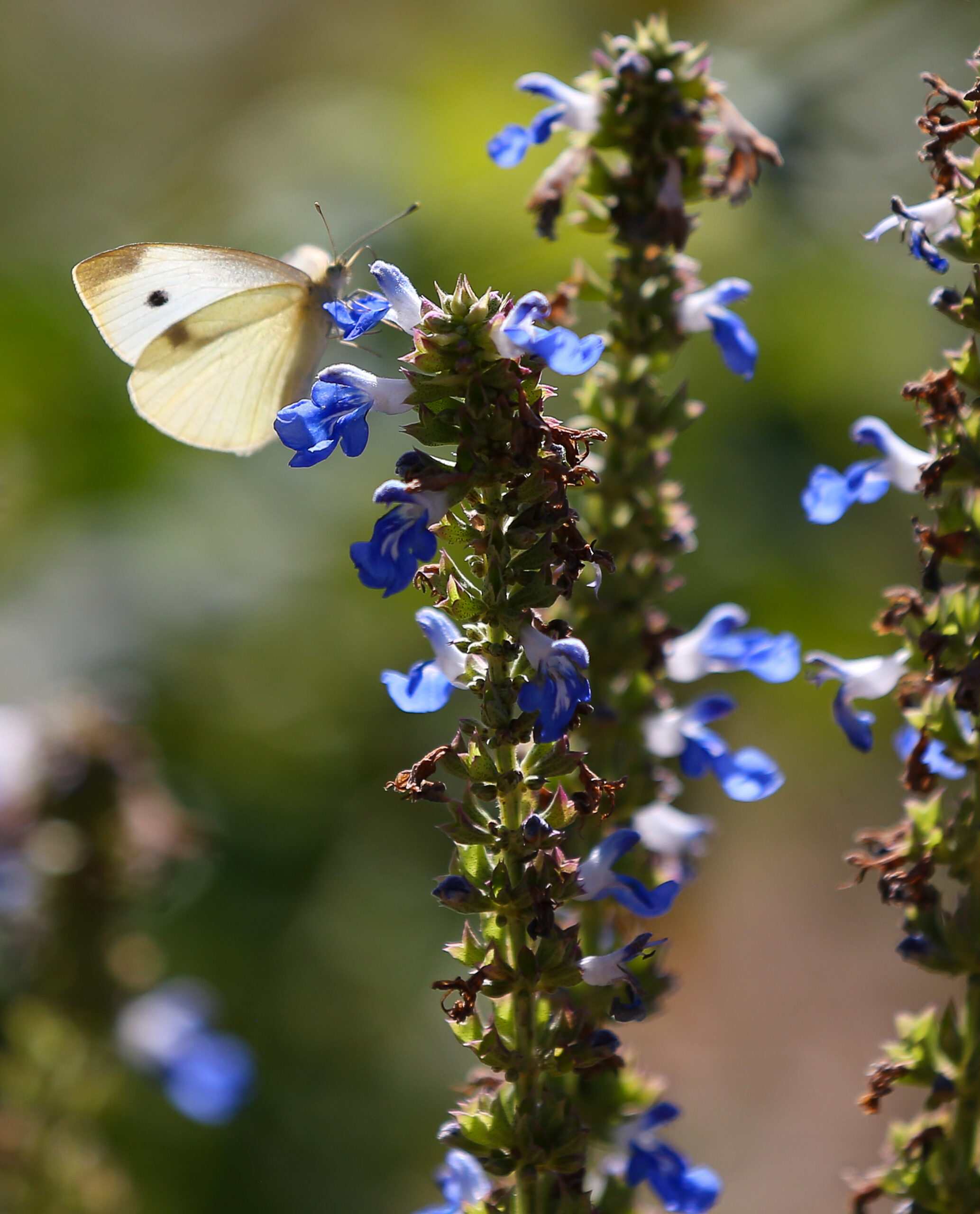
“Why I love native plants”
A nurseryman for over 40 years, Phil Van Soelen founded (and later sold) California Flora Nursery, which specializes in native plants from California.
At his Sebastopol home, Van Soelen created a native plant garden to celebrate living in what he calls our “biodiversity hot spot.” He says native plant species attract and support insects and birds—and well-chosen and well-placed natives, once established, use little water. Other plants native to Mediterranean climates, such as those from southern Europe and South Africa, mix in well alongside.
“I love the ever-changing progression of growth, blossoming, and dormancy of California natives and their deep synchronicity with our climate,” says Van Soelen. calfloranursery.com
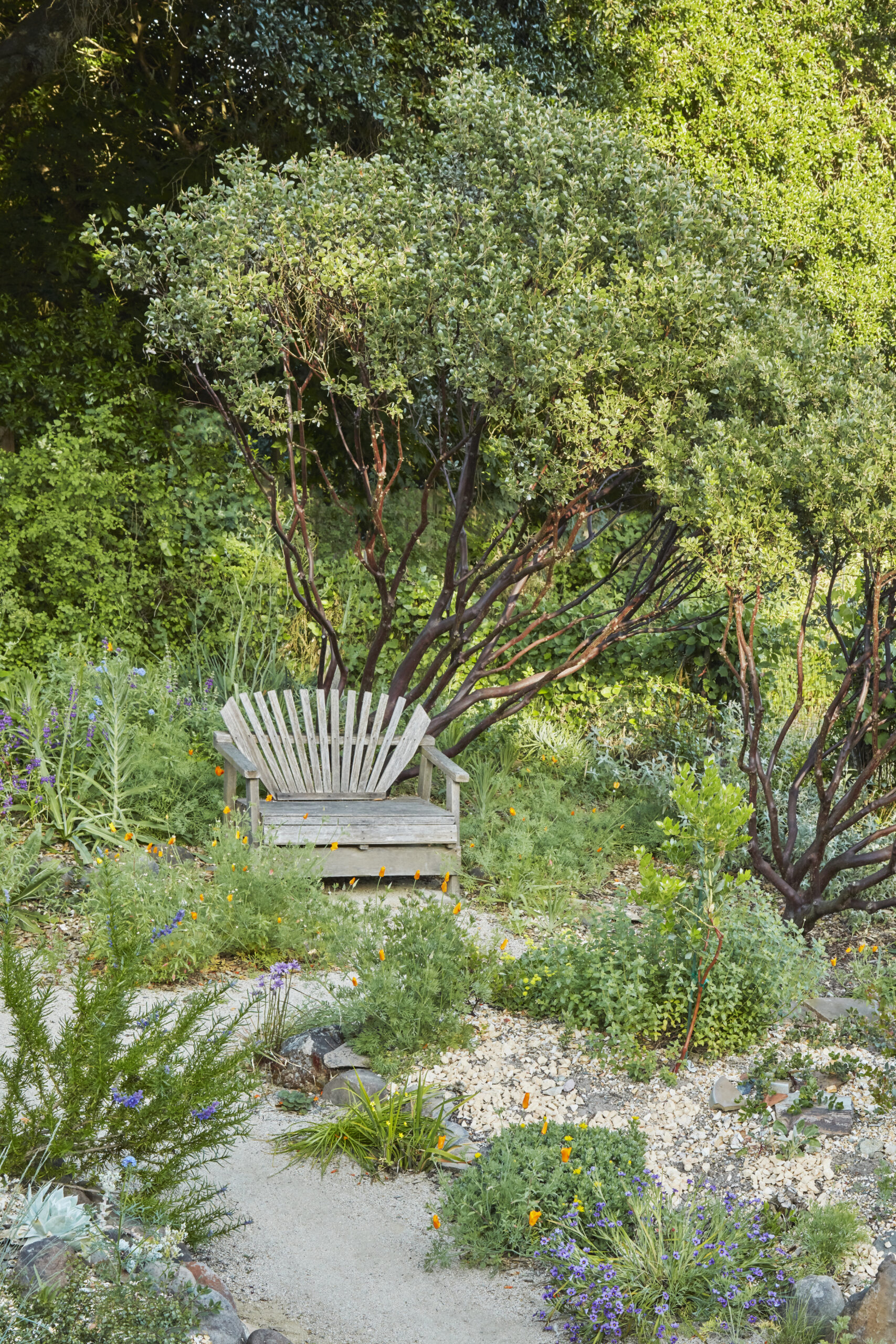
Best spring plant sales
We love the neighbor-to-neighbor, grassroots feel of a good old-fashioned plant sale.
Petaluma Bounty Farm Sale: Heirloom edibles and flowering plants that grow well in Sonoma. April 23 by appointment. 55 Shasta Ave., Petaluma. petalumabounty.org
Sonoma Garden Park Sale: Drought-tolerant native plants and pollinator-friendly picks. April 8. 19996 Seventh St., E., Sonoma. sonomaecologycenter.org
Food For Thought Benefit Sale: Veggies, native plants, and more to raise funds for those with serious illnesses. April 22 and 23.6550 Railroad Ave., Forestville. fftfoodbank.org
Santa Rosa Garden Club/Redwood Empire Rose Society: Two sales in one, with healthy plants lovingly raised by club members. April 22. 2050 Yulupa Ave., Santa Rosa. santarosagardenclub.com
Healdsburg Garden Club Sale: Succulents, perennials, shrubs—even garden gear and flower arrangements. April 29 and May 13. West Healdsburg Plaza near the farmers market. healdsburggardenclub.org
SRJC Shone Farm Sale: Everything for the summer garden, from SR JC horticulture students. April 29. 7450 Steve Olson Lane, Forestville. shonefarm.santarosa.edu
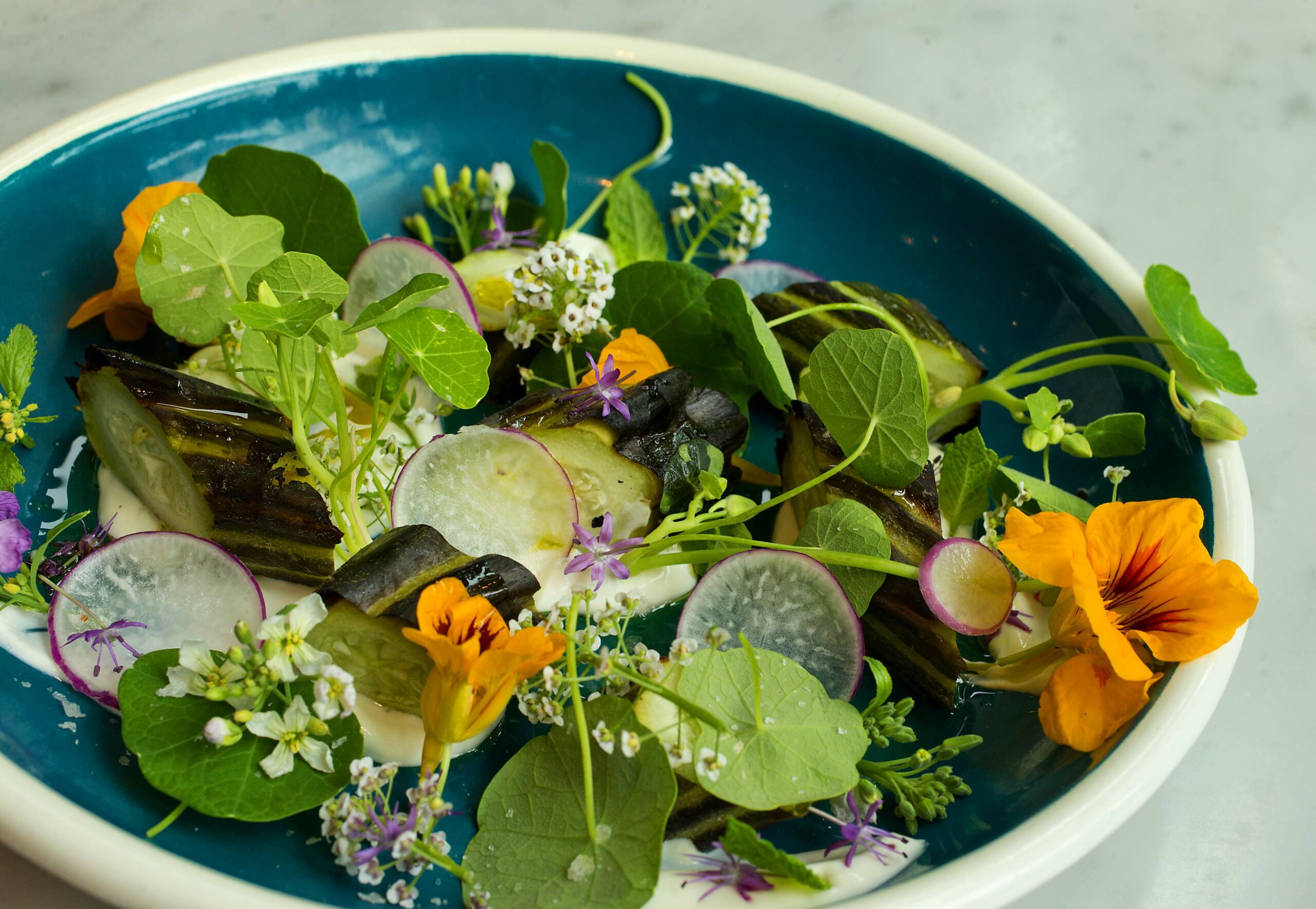
Eat your blossoms
Make food feel fancy with edible flowers. They’re a perfect pick for home gardeners, as they’re expensive to buy and forgiving to grow, even in a small space or container.
• Peppery blooms like nasturtiums and borage taste wonderful mixed into salads.
• Delicately flavored rose petals and violas are beautiful on cakes.
• Rosemary, bee balm, scented geraniums, and many other herbs have tiny flowers to collect by the handful.
• Use daylilies like squash blossoms. Stuff a whole flower, separate the petals and use in a salad, or stir-fry mature buds.
• To incorporate the petals of larger blooms like calendula and dandelion, break the bloom apart with your fingers and discard the nub at the center.
My favorite gear
Scot Medbury, current director of the Sonoma Botanical Garden in Glen Ellen loves the funny-looking Grampa’s Weeder, which has an extra-long handle and a sideways foot pedal for leverage to tackle deep-rooted weeds like teasel and thistle throughout the garden. It’s his constant go-to. grampasweeder.com
Succession planting 101
Get growing earlier in the spring with succession planting, a way to maximize production during seasonal transitions. There are several ways to do it. One way is to plant a quick, early-season crop like radishes in the same spot as something that’s slower to mature, like carrots, so one crop is done by the time the other takes off. Grow lettuce with tomatoes, and enjoy salad until your tomatoes get going later in the summer. Other good combos include early beets with green beans and lettuce with garlic.
Another tip is to stagger smaller plantings of the same crop, every 2-3 weeks, to extend the harvest season. And pick varieties of veggies like beans, squash, and tomatoes with different maturity dates, from early to late, to extend the harvest. With planning, you can have fresh veggies virtually year-round.
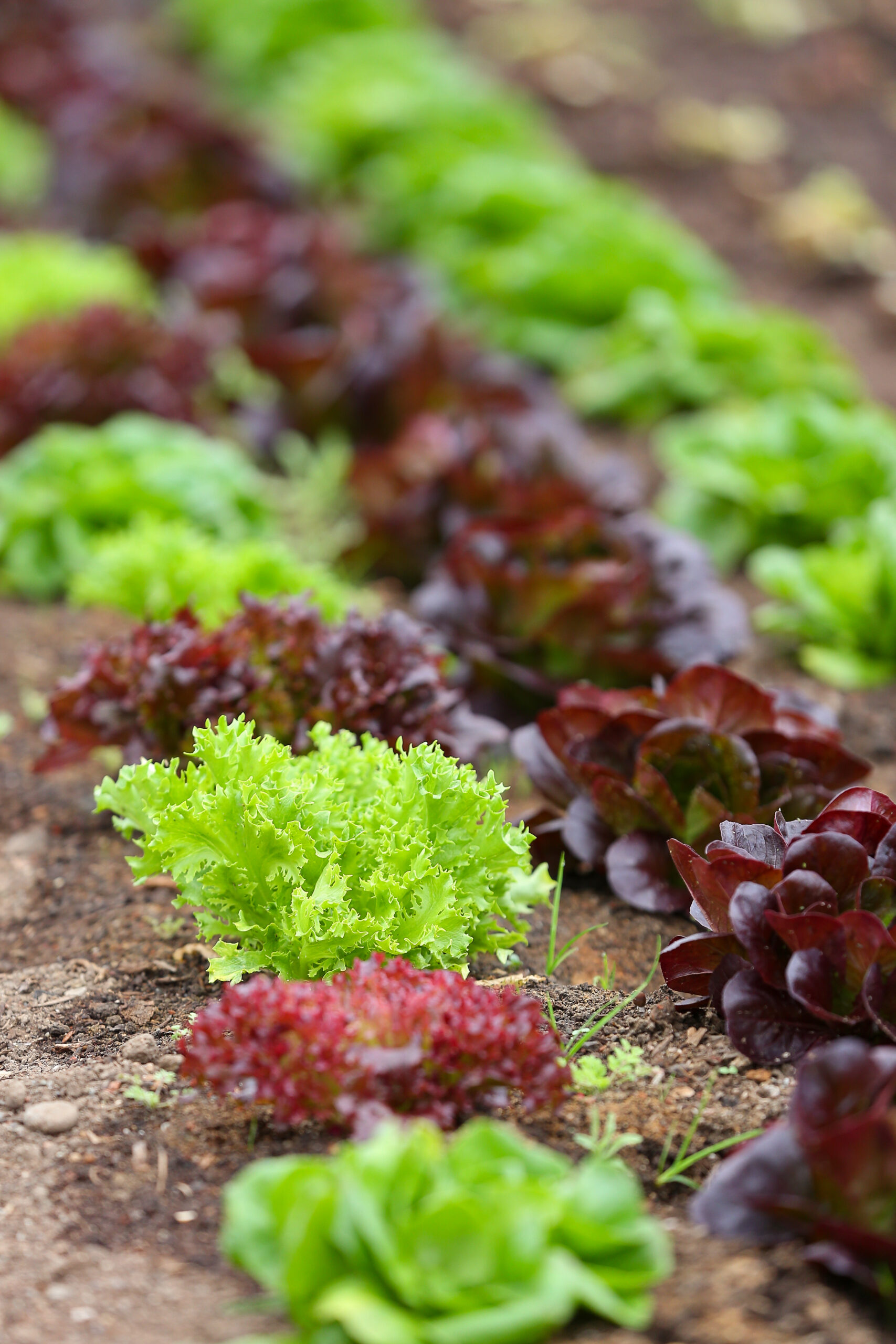
Herbal tisanes
A tisane is an herbal tea, fresh from the garden and without the caffeine. Rinse a few small handfuls of herbs (ones grown without pesticides), then steep in boiling water with a bit of honey for a refreshing drink that speaks to season and place. Herbs to try include all kinds of mint, thyme, lemon verbena, and basil. Add in thin slices of fruit or citrus peel for even more flavor, and enjoy your cup.
Community seed exchange
The Community Seed Exchange in Sebastopol offers free, locally grown seeds and veggie starts to the community, focusing on high-producing staple food plants (dried corn, beans, favas) well adapted to west county conditions. communityseedexchange.org
Favorite public gardens
• Kendall-Jackson Estate Gardens
• Kruse Rhododendrons State Natural Reserve
• McEvoy Ranch
• Matanzas Creek Winery
• Sonoma Botanical Garden
Test your soil
Find out more about the fertility and health of your soil with a soil test. The results will help you better understand your soil’s character (sandy, loamy, clay); its ability to retain water; whether your soil is lacking important nutrients plants need to grow; and how to correct those deficiencies with soil amendments. Soil tests are good to do when you’re establishing a new garden, and every few years as your garden grows and changes. To test, gardeners often mail soil samples to an outside laboratory.
Local experts recommend the soil testing services at Logan Labs. The company’s website has simple videos on collecting a sample (you don’t need any special tools), packaging and sending it for analysis, and interpreting your results. Testing starts at $25. loganlabs.com
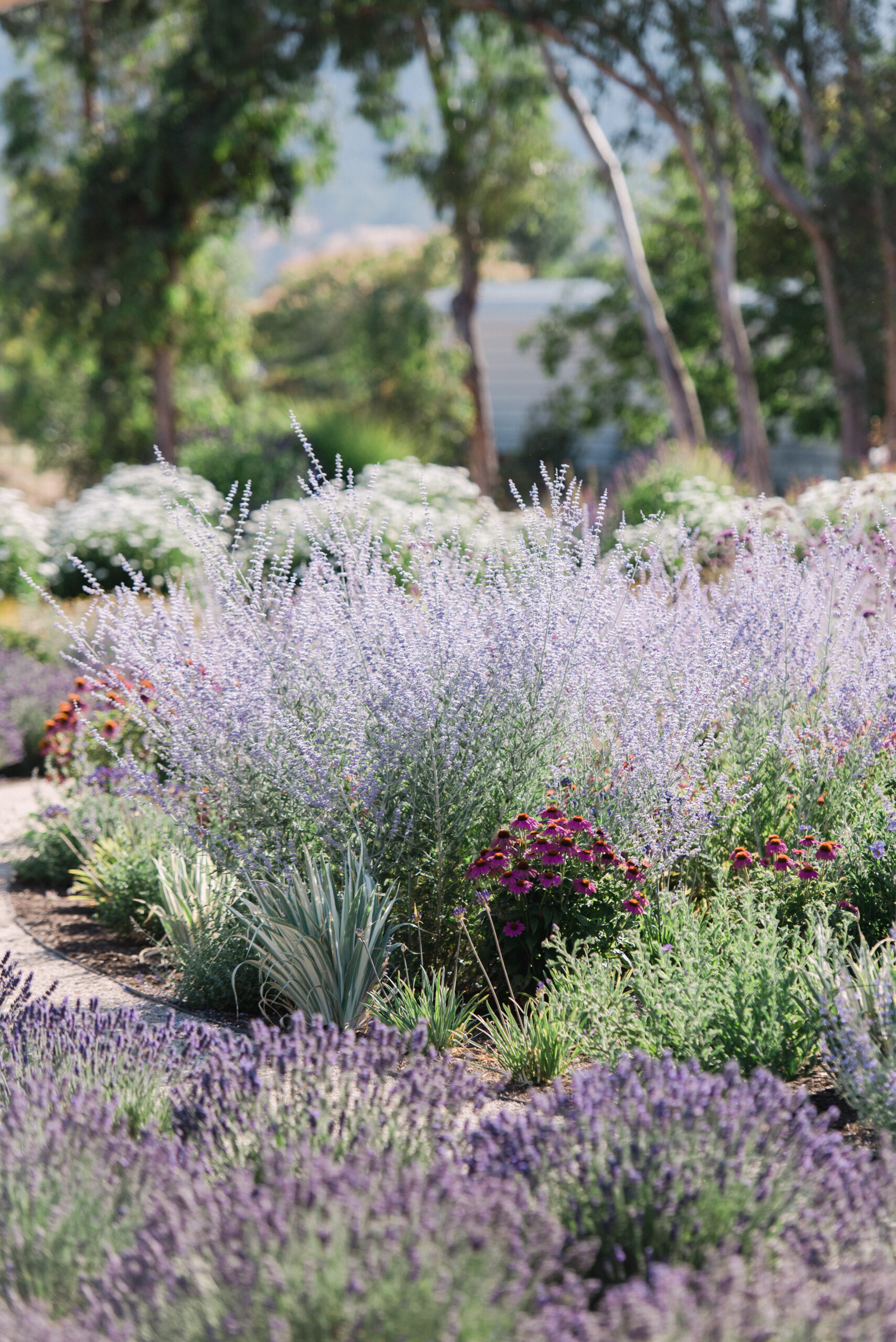
Five great lavender picks
Santa Rosa’s Bees N’ Blooms centers around a stunning lavender maze created out of concentric circles planted in different varieties. The display of shape, form, and color is a wonder to visit in May and June ( beesnblooms.com ). Here are owner Susan Kegley’s five favorite lavenders for Sonoma gardeners. For best growth, she advises full sun, good drainage, and slightly alkaline soil.
• ‘Folgate’: An English variety in brilliant, intense purple.
• ‘Royal Velvet’: Another English type that is good for culinary use.
• ‘Melissa’: A pale, powdery purple variety that tastes a bit spicy.
• ‘Grosso’: The classic French pick, primarily planted for oil production.
• ‘Gros Bleu’: Tall with a bluish cast and an unusual shape to the flower spike.
Free water-saving design plans
The Sonoma-Marin Saving Water Partnership, working with the Sonoma Ecology Center, Daily Acts, and local landscape architect Ann Baker, developed eight different template designs for water-wise suburban Sonoma landscapes. Get a look at the different options at savingwaterpartnership.org.
My favorite gear
“I’m a bit of a tool snob,” admits Colby Eierman of Stone Edge Farm, who loves his welded steel broadfork. It gently loosens soil without disturbing its structure and is fun to use—stand on the bar and wiggle back and forth to sink the tines into the soil. meadowcreature.com
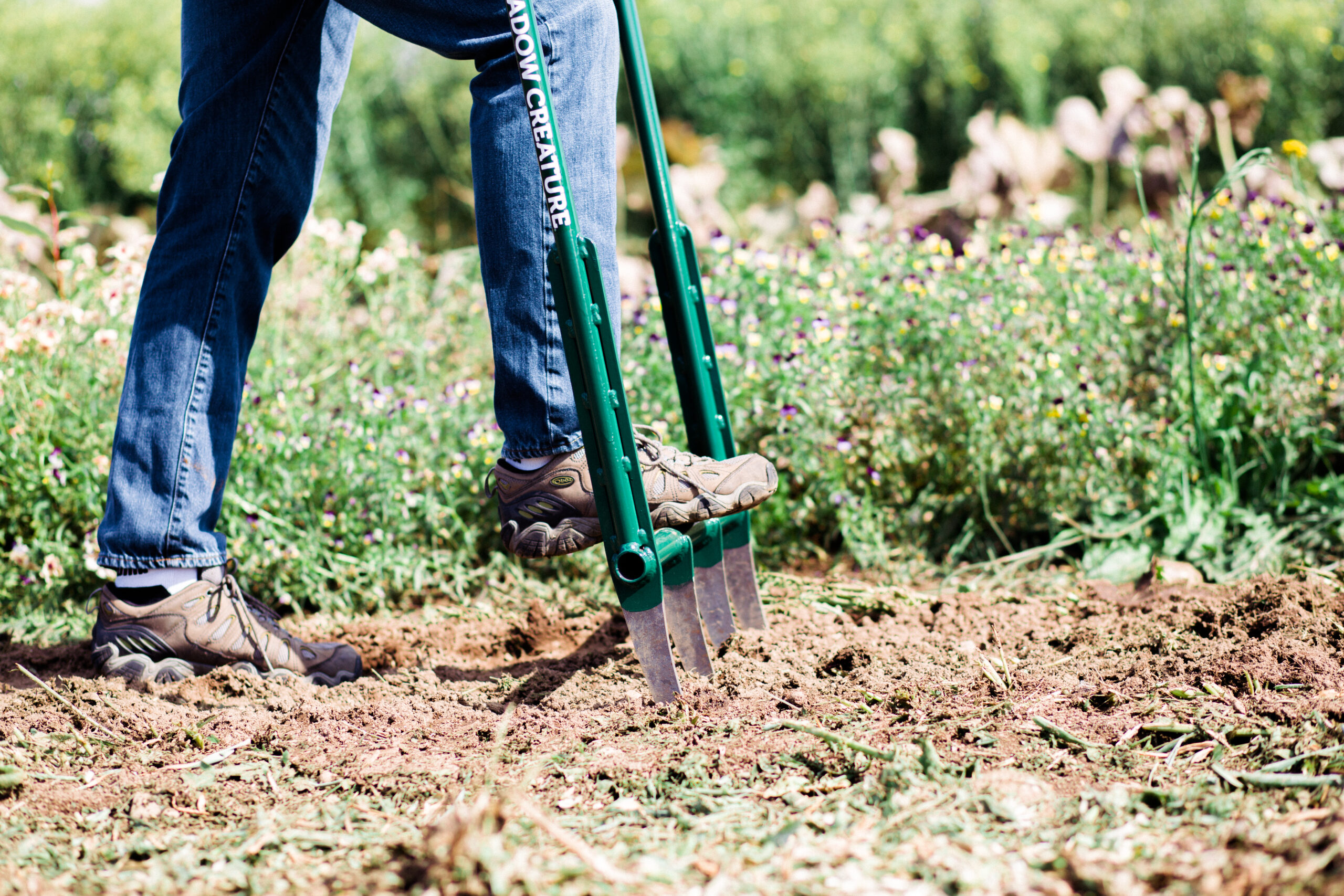
What’s a grafted veggie?
Grafted fruit trees aren’t new, but grafted veggies? This trend physically combines two different plants (a rootstock and a fruiting variety) into a single plant optimized for higher yields. Grafted tomatoes and other veggies also promise better resistance to diseases and drought—but they are more expensive. Are they worth it? Fionuala Campion, owner of Cottage Gardens of Petaluma, is an enthusiastic supporter of heirlooms, so you won’t find them at her nursery. But some studies did find these new grafted veggies are more prolific. If you try them this year, remember to plant with the graft above the soil. Available at Friedman’s Home Improvement.
Eat in the garden
Get inspired to grow at one of these Sonoma restaurants.
Barndiva, Healdsburg: Dine under a ceiling of leafy plane trees trained into a dome, surrounded by garden art. barndiva.com
Farmhouse Inn, Forestville: Redwood-shaded paths wind past roses and lush ferns. farmhouseinn.com
Folktable, Sonoma: Eat inside or out, then wander through the adjacent gardens. folktablerestaurant.com
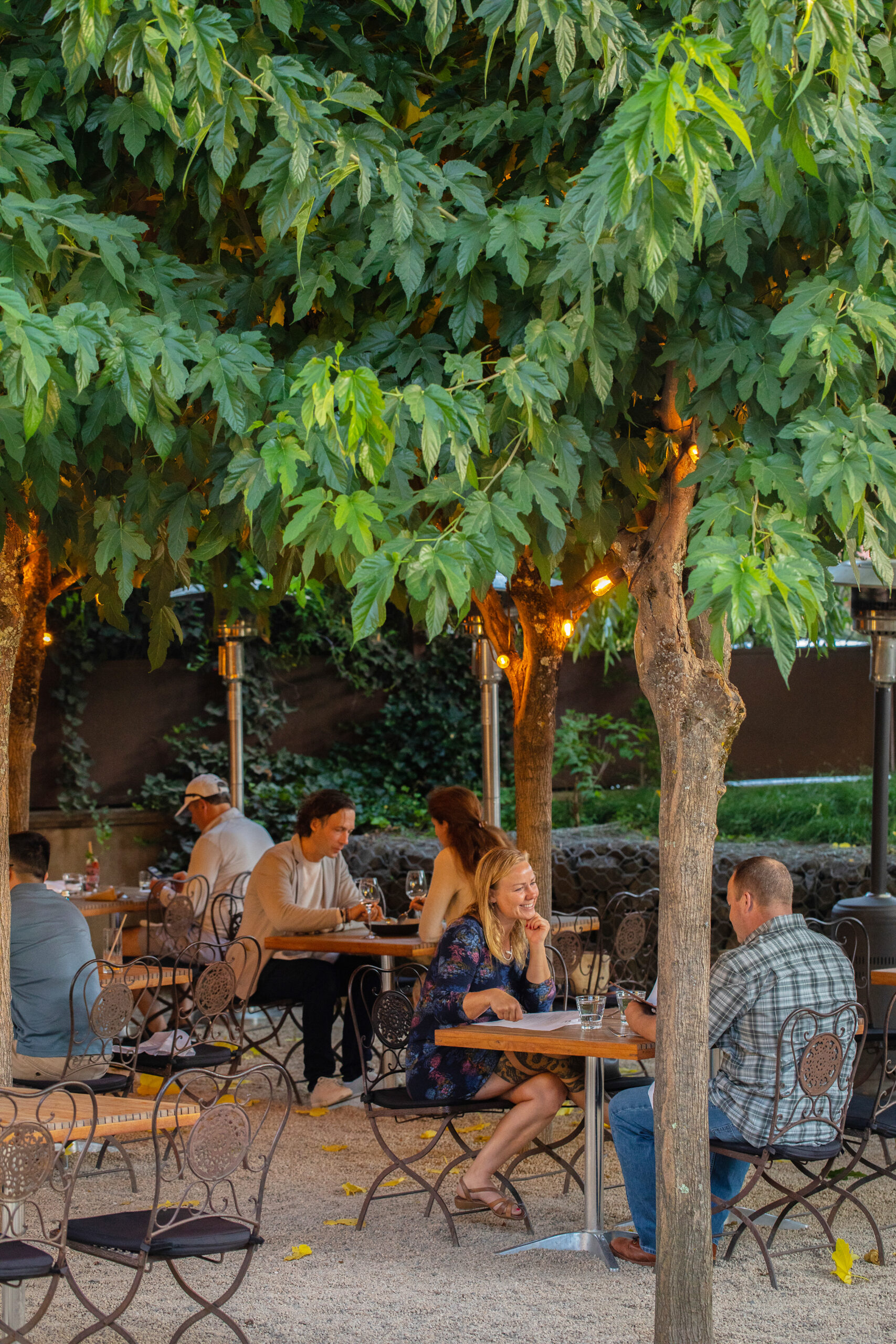
John Ash & Co., Santa Rosa: Lush settings at one of the region’s first destination resorts. vintnersresort.com
The Madrona, Healdsburg: Tall palms and flower-studded meadows at a newly updated resort. themadronahotel.com
Salt & Stone, Kenwood: Dine by a large waterlily pond right next to vineyards leafing out. saltstonekenwood.com
Sunflower Caffé, Sonoma: Locals brunch in a leafy courtyard with bubbling fountains. sonomasunflower.com
The Spinster Sisters, Santa Rosa: Raised beds overflowing with herbs and flowers in the laidback outdoor dining room. thespinstersisters.com
The best planting calendar
Found! A free, comprehensive calendar detailing which veggies to start when in our climate, developed as part of a discontinued, decade-old initiative called iGrow Sonoma. Go to igrowsonoma.org, scroll down to the bottom of the page, and click on “year-round growing guide.” Download before it disappears.
Harvest for the hungry
The Harvest for the Hungry Garden, farmed by volunteers on land donated by Christ Church United Methodist in Santa Rosa, harvests over 25,000 pounds of produce annually for Sonoma residents in need. New volunteers are welcome. harvestgarden.org
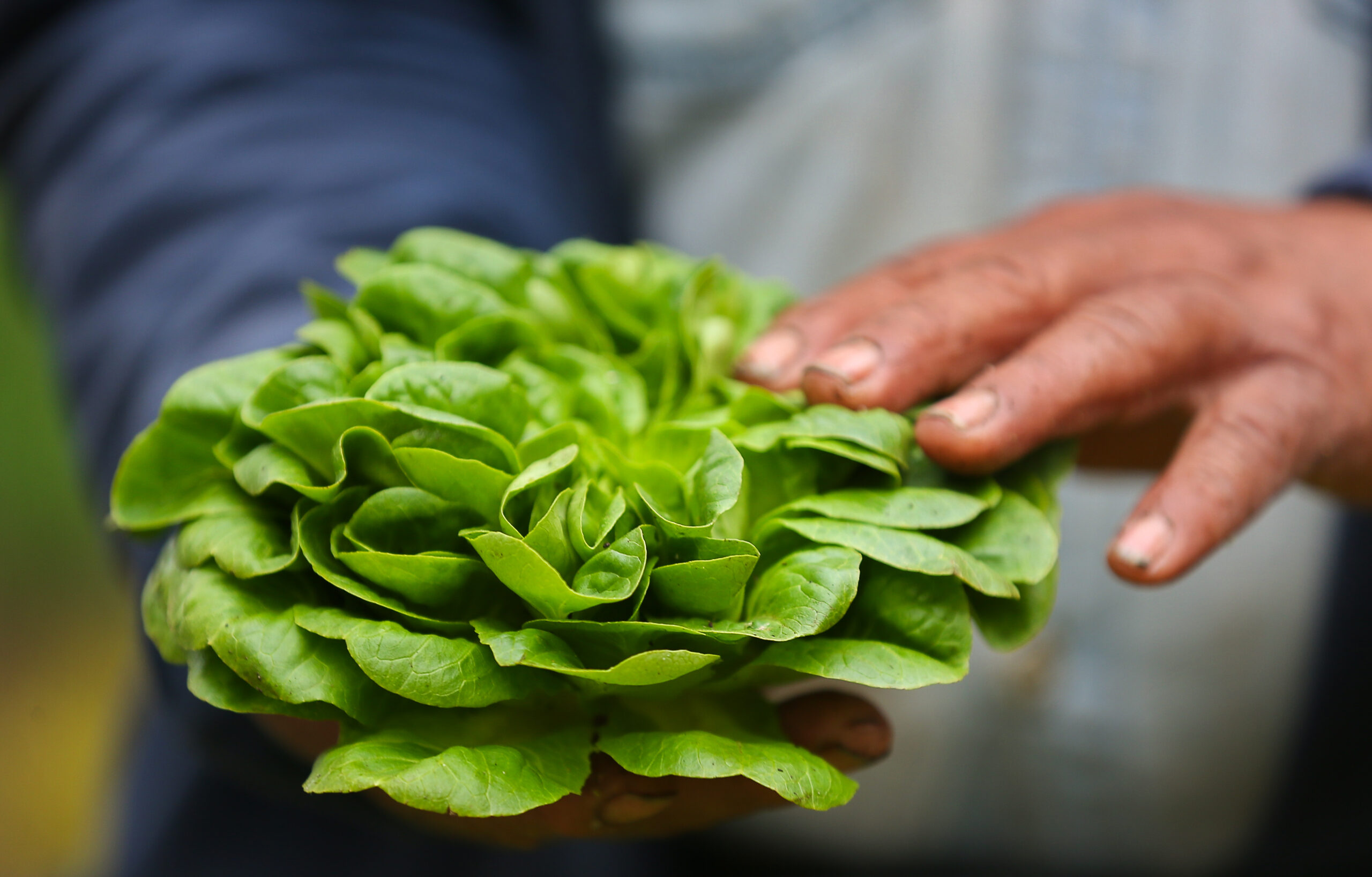
New soil amendments
This spring, two new products can help make your garden healthier and more biodiverse. They’re targeted additions that are generally applied in small amounts to freshly dug planting holes.
Biochar: A charcoal-like substance made by burning organic material (often forestry waste) at high temperatures under low-oxygen conditions. Improves water retention and microbial activity in your soil and reduces the need for fertilizer but doesn’t offer a significant boost in nutrients. Where to buy: Sonoma Compost Co., sonomacompost.com
Mycorrhizae: These friendly microscopic fungi have a symbiotic relationship with plant roots, allowing the roots to take up more nutrients and water from the soil. They help plants grow better root systems, reduce root diseases, and reduce the need for water and fertilizer. Where to buy: Harmony Farm Supply & Nursery, harmonyfarm.com
Four lesser-known culinary herbs
Stone Edge Farm’s Colby Eierman oversees a 16-acre garden with over a hundred different heirloom vegetables, including plenty of culinary herbs to stock the kitchen at Edge, the farm’s sister restaurant in Sonoma (stoneedgefarm.com).
• Tulsi basil. While Eierman still plants plenty of the standard ‘Genovese’ basil, he loves the flavor of this variety.
• Chervil. Eierman calls this short-lived, cool-season French herb “finicky,” but says its delicate flavor is hard to substitute. He enjoys it fresh in salads and in Green Goddess-style dressings.
• Huacatay. Also known as Mexican marigold, this shrubby perennial has a unique scent that combines cilantro and citrus notes and is a staple of Peruvian cooking.
• Nepitella. A perennial wild herb from Tuscany that combines the aromas of mint, oregano, and basil. “We’ve planted this strongly flavored herb so much around the farm that you can taste it in our honey—no joke,” says Eierman.
Shared gardens
Living in a smaller space doesn’t mean you have to be sidelined from the sport of gardening. Community gardens, part of the sharing economy, are proliferating throughout the county, offering beds where you can grow your own food and flowers, usually for a small annual fee.
• Bayer Farm, Santa Rosa. landpaths.org
• Petaluma Bounty, Petaluma. petalumabounty.org/community-gardens
• Posh Squash Community Garden, The Sea Ranch. poshsquash.org
• Windsor Green Community Garden, Windsor. windsorgardenclub.org
Natural tints
Dyes made from garden plants are having a moment. Rose petals, geraniums, and coreopsis can be boiled to create delicately hued silks for scarves and pillowcases. Crushed blueberries make a rich lavender hue. Even certain veggie scraps yield interesting colors: onion skins dye fabrics yellow, and avocado pits and shells make a rusty pale pink. (Many of the same plants can be used to dye Easter eggs, too!)
Alisha Bright of Fiber Circle Studio in Petaluma runs classes on natural dyes and other fiber crafts. She leads a workshop on plant printing on March 26 in Petaluma. fibercirclestudio.com
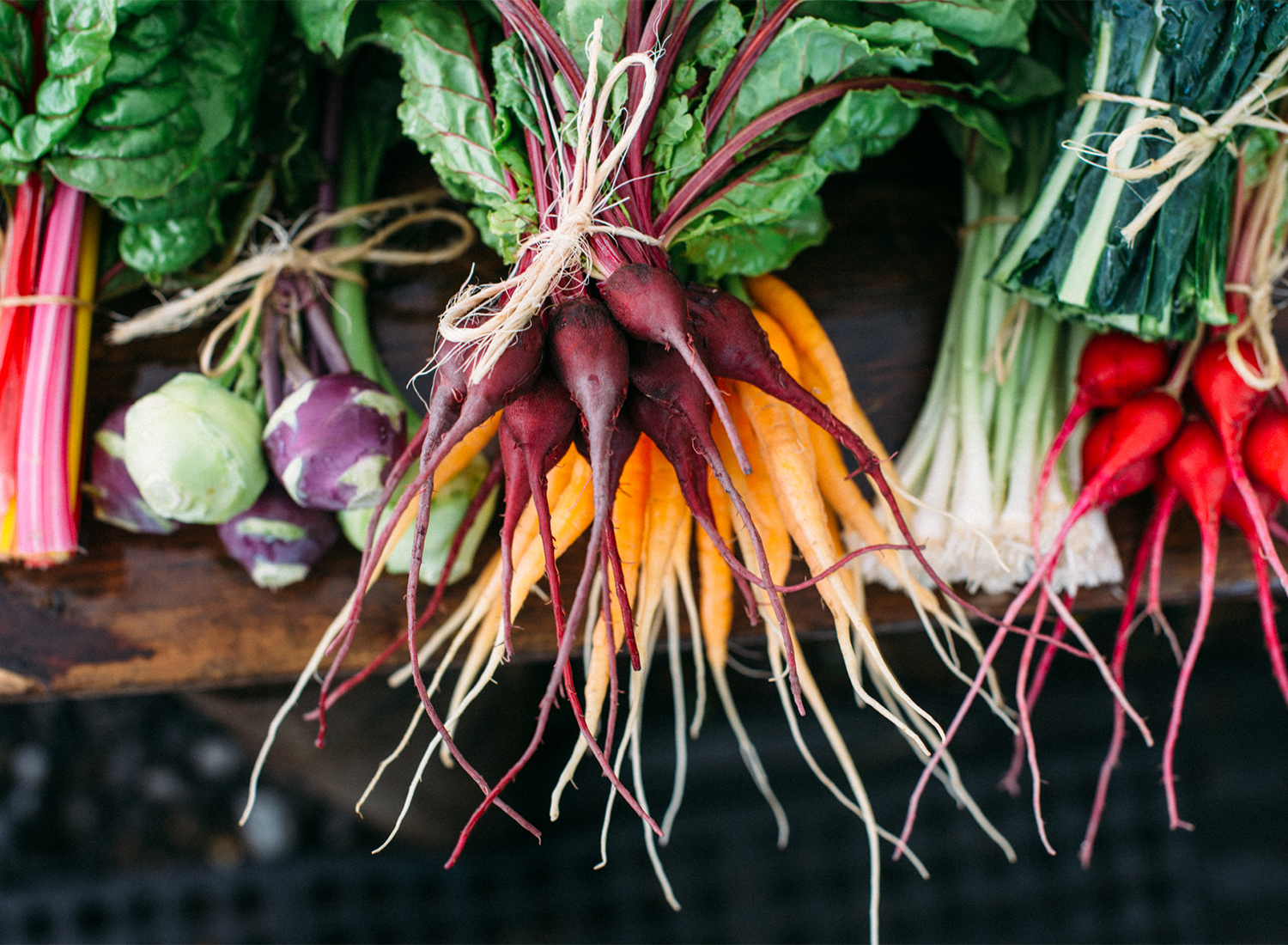
Right-size your veggie garden
“I always try to talk people out of their gardening stress,” says Sara McCamant, who runs the food gardens at Ceres Community Project in Sebastopol, a program that provides healthy meals for those with cancer, diabetes, and other health issues.
McCamant is passionate about making the most of her space, advocating for plants that are nutrient-dense and produce over a long period of time.
“I think people need to match their gardens to what they love to eat. Every household needs just one good zucchini plant, not six.” She recommends kale and chard, which can be harvested for 10 months, plus garlic, onions, parsley, and beans. Peppers if you like hot sauce. Tomatoes for slicing and canning, but not so many that the fruit goes to waste.
McCamant teaches the teen volunteers at Ceres how to build and care for the soil. She tills as little as possible, adds a few inches of compost at planting time, and keeps the soil well covered with mulch. “Trust the soil,” she reminds her students. “It gets richer because you’re growing in it.” ceresproject.org





